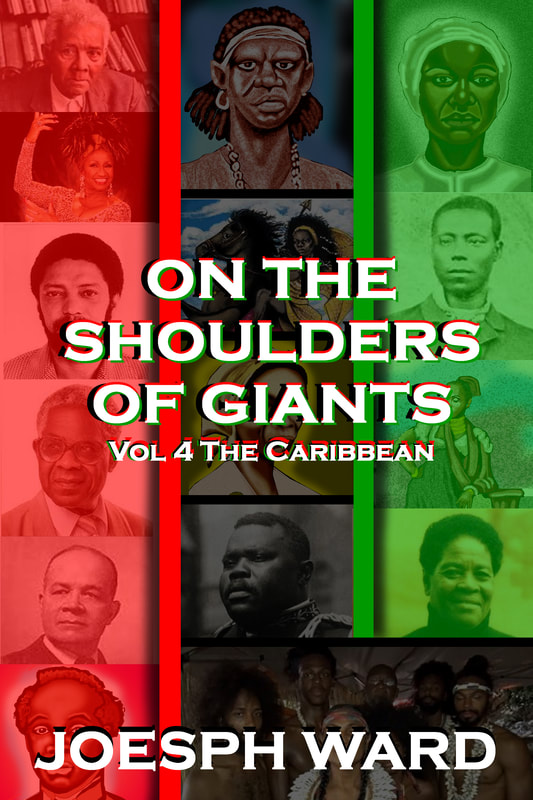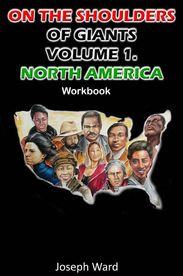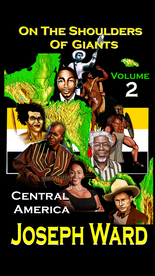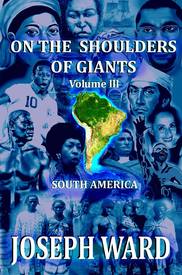|
10/4/2022 This Warrior Queen Fought The French & The Moors | Ndate Yalla Mbodj of the Waalo KingdomRead NowIn 1810, the Kingdom of Waalo was a vast and robust West African kingdom that existed near the lower Senegal River area, in present-day Senegal and Mauritania. The Waalo Kingdom was one of four Wolof Kingdoms, Cayor, Baol, and Jolof were the other three kingdoms. Brak Amar Fatim Borso Mbodj was the powerful king who ruled Waalo. His queen was Lingeer-Awo Fatim Yamar Khuri Yaye Mbodj. In the Waalo Kingdom, Brak was a title that meant king, Lingeer meant queen, and Lingeer-Awo meant the queen who was the king's first wife. Ndate Yalla was the youngest daughter of Brak Amar and Lingeer-Awo Fatim Yamar, they also produced an elder daughter named Ndjeumbeut Mbodj, who would later become Lingeer of Waalo. As young girls, Ndate Yalla and her sister learned how to rule a kingdom and were trained to fight with the Waalo army. When the men were away, the women were formidable opponents to any challengers. Like a number of other African nations, the Waalo women warriors were a part of their army. The women were seen as skilled and fierce. On one occasion in 1820, Brak Amar Fatim was away from his kingdom, a group of Moors attempted to invade Waalo, they were met and defeated by the women warriors of Waalo, led by Lingeer-Awo Fatim Yamar. Unfortunately, Brak Amar Fatim Borso Mbodj died in 1926. Shortly after defeating the Moors, the women warriors of Waalo were forced to fight the invading Moors again who returned with more soldiers. The number of soldiers the women were facing was too great and they were defeated. Before the defeat, Lingeer-Awo Fatim Yamar was able to escape with her two daughters. The death of Brak Amar Fatim was significant for the Waalo Kingdom because he was known for resisting the Islamic faith and culture, he was also labeled as anti-Islamic for his rejection of Islam. Ndate Yalla married Brak Yerim Mbanyik Tigereleh Mbodj at the age of 16. Brak Yerim was her cousin, but the marriage occurred to maintain their family's dynasty. She later married the warrior and prince of Cayor Marosso Tassé Diop. Ndate Yalla would appoint Marosso Tasse as the commander of her army because of his immense skill as a warrior. Around the year 1846, Ndjeumbeut Mbodj was the Lingeer of Waalo until her death. Ndate Yalla was officially crowned Lingeer later in 1846. It didn’t take long for her to show her skill as a warrior, and intellect as a ruler. As Lingeer, Ndate Yalla enlarged the women warriors of Waalo, she would need the might because the French and the Moors would become her enemies. Lingeer Ndate Yalla had a disagreement with the French who occupied a French colony called Saint-Louis, over the taxing of the Soninke people as they passed through Waalo lands. The French accused Ndate Yalla of stealing a number of oxen as they taxed the Soninke. The French sent a letter to Ndate Yalla stating that if she doesn’t return the stolen oxen she would be treated as an enemy. Ndate Yalla did not appreciate being accused of stealing oxen and being threatened. Ndate Yalla reigned from 1846 to 1855, and from 1847 she was constantly at war against the French and the Moors of Trazar. The Battle of Dioubouldy begin in 1855, Lingeer Ndate Yala and Marosso Tasse led the kingdom of Waalo against the French, who were determined to destroy the six main kingdoms of the Senegambia area, which included the four kingdoms of Waalo. Waalo was the first of the six Senegambian kingdoms to be attacked by the French, one because of its close proximity to Saint-Louis, and two, because it was led by a woman. The French saw Waalo as weak because Ndate ruled the kingdom. The warriors of Waalo were fierce and brave, they were outmanned and outgunned by the French but were still able to fight off the French for several months. Eventually, the French overwhelmed the Waalo warriors, men and women, fighting for their freedom. The kingdom was falling, but Marosso Tasse and his soldiers were still fighting the French. Ndate Yalla was able to escape with a few of her family members, upon her escape, she stated the following words to her soldiers: Today we are invaded by the conquerors. Our army is completely routed. The Tiedo of Waalo, valiant warriors though they are, have almost all fallen to the bullet of the enemy. The invader is stronger than we are, I know, but should we abandon Waalo to the hands of foreigners? The kingdom of Waalo had fallen, Ndate Yalla and Marosso Tasse were forced to relocate to the city of Cayor where they received protection from family members. The French threatened to invade the family if they did not surrender Ndate Yalla and her husband. The family refused the French and chose to protect their queen. Ndate Yalla died in 1860, she is remembered as one of the most powerful and legendary queens in the history of Waalo and the Senegambian region. She is highly revered and loved by her people. So much so that a statue of her was erected in the city of Dagana, Senegal. To Lingeer Ndate Yalla Mbodj, we proudly stand on your shoulders. J.A. Ward Click here to support the OTSOG book series. References: https://iloveafrica.com/ndate-yalla-mbodj-the-african-queen-who-fought-against-the-french-colonization/ https://africaheritages.wordpress.com/african-leaders-and-empires/african-women-leaders/ndate-yalla-mbodj-of-senegal/ https://afrolegends.com/2015/06/08/queen-ndate-yalla-mbodj-senegalese-queen-leading-the-resistance-against-french-colonization/ https://en.wikipedia.org/wiki/Ndat%C3%A9_Yalla_Mbodj
0 Comments
On November 8, 1942, Sara Gomez was born in the Guanabacoa neighborhood of Havana, Cuba. I do not have any information about her parents, but I do know Sara was raised by her paternal grandmother and four aunts. Sara’s grandmother and aunts prioritized education and exposed her to Afro-Cuban culture, music, art, and literature. She learned to play the piano and was introduced to ethnography after learning about her Afro-Cuban culture. Her neighborhood of Guanabacoa was an Afro-Cuban cultural hub for scholars, musicians, business professionals, artists, dancers, and writers. A few of her family members were professional musicians who performed with the Havana Philharmonic Orchestra. As a young woman, Sara would attend dances held at a location called The Progressive Club. Dancers, musicians, and other young people who attended The Progressive Club inspired Sara to study music at the Havana Conservatory of Music. Sara’s interest and community could not keep her from experiencing racism and gender inequality as an Afro-Cuban woman. As she grew older, she would use her voice and talents to combat the racism and gender inequality in Cuba. Sara gained experience as a writer working for a youth magazine called Mella, she would follow that by becoming a writer for the Communist Party newspaper News of Today. These experiences would lead her to accept a position directing films for the Instituto Cubano Del Arte e Industria Cinematográficos, or the ICAIC. Becoming a film director catapulted Sara Gomez into the Cuban history books, she became the first woman to direct films in Cuban history. An Afro-Cuban woman became a filmmaking pioneer. She began her directing career making documentary films, which helped her to focus more on creating a realistic depiction of the Cuban people and culture. When Sara began working at the ICAIC it was a new organization and she was one of two Afro-Cuban filmmakers in the organization. Until her death, Sara Gomez was the only woman to direct films for the ICAIC. She used her films to highlight the plight Afro-Cuban people faced daily. The messages in her films exposed the racism of Cuba, which was the root cause of all of the disparities the Afro-Cuban people faced. She not only highlighted the issues, but she included ideas to solve their problems. Her films held a mirror to the Government while holding a magnifying glass to the Cuban people's eyes so they could see the root of their issues. Sara was a celebrated filmmaker. She directed 13 short films and 1 feature-length film. She was also the assistant director for 3 films. Her feature-length film One Way Or Another received critical acclaim because it explored racism and gender inequality in Cuba, issues that Sara experienced as a young woman. She married a man named Hector Veitia, the couple produced a daughter. Years later, Sara married a man named Germinal Hernandez and they produced two children. Sara Gomez died on June 2, 1974. She is remembered as a Cuban filmmaking pioneer, who was brave and creative enough to put a lens on the Cuban issues that led to the existence of the revolution. To Cuba’s first woman film director, Sara Gomez, we proudly stand on your shoulders. J.A. Ward Click here to support the OTSOG book series. References: https://aaregistry.org/story/sara-gomez-filmmaker-born/ https://en.wikipedia.org/wiki/Sara_G%C3%B3mez On October 9, 1895, Eugene Jacques Bullard was born in Columbus, Georgia as the 7th of 10 children born to his parents. William Bullard was the name of his father who was also called Octave, a black man born in Stewart County, Georgia. Josephine Thomas, who was called Joyakee was Eugene Bullard’s mother. Joyakee was of black and Muscogee Creek indigenous American origins. She died when Eugene was 6 years old. Eugene would attend the 28th Street School in Columbus, Georgia until the fifth grade. During these years, Eugene witnessed acts of racial terrorism against blacks. A mob of angry white men attempted to lynch Octave Bullard over a work dispute. The racism in Columbus, Georgia was becoming too much for Eugene to deal with and he wanted to escape it. His father would often tell him stories about France abolishing slavery and black men being treated as humans and not animals. These stories resonated with a young Eugene and sparked a flame that would lead him to France. At the age of 11, Eugene decided to run away from home in hopes of eventually making it to France. He traveled to Atlanta, Georgia where he became acquainted with the Stanley's, a group of British Gypses who allowed him to work as a care taker to their horses, and they also taught him how to ride and race horses. The Stanley’s told him stories about black people in Brittan being free of the racial discrimination blacks faced in America. The stories increased Eugene's desire to reach Europe. Around 1911, Eugene was in Dawson, Georgia working as a stable-boy and aspiring jockey for the Turner family. Because of his hard work and dedication, the Turner family allowed Eugene to be their jockey at the 1911 County Fair in Dawson, Georgia. The following year, Eugene made his way to Norfolk, Virginia, where he snook onto a German Merchant Freight Ship. He was eventually discovered and kicked off the ship in Aberdeen, Scotland. During his stay in Aberdeen he found odd jobs to survive. He traveled to Glasgow, Scotland where he worked more odd jobs. He then arrived in London and eventually Liverpool where he became a prize-fighter and comedian within the Freedman Pickaninnies. Eugene’s boxing trainer was Aaron Lister Brown, or better known as the boxer the Dixie Kid. The Dixie Kid arranged for Eugene to fight in Paris, France, which was a dream come true for Eugene, because he would finally make it to France. After the fight, Eugene decided to live in France for a while and continue boxing. He also found work in a music hall. Germany declared war on France on August 3, 1914, World War 1 had began on July 28, of 1914. In October of 1914, Eugene Bullard enlisted in the French Army’s Foreign Legion. Eugene was involved in active combat against the Germans, first as a machine gunner, then involved in the Second Battle of Champagne. He served with the 3rd Marching Regiment of the 1st Foreign Regiment, the 2nd Marching Regiment of the 1st Foreign Regiment, 170th French Infantry Regiment, and the 2nd Marching Regiment of the 2nd Foreign Regiment in the 1st Moroccan Division. The French Army’s 1st Moroccan Division was one of the army’s most highly decorated divisions. The Foreign Legion suffered casualties that caused them to be reassigned as a reinforcement unit. In addition to Eugene participating in the 2nd Battle of Champaign, he participated in the battles of Somme and Verdun. He was severely injured in the battle of Verdun. While recovering from his injuries, Eugene decided to join the 170th French Infantry Regiment, who were nicknamed the “Swallows of Death”. Injuries didn’t keep Eugene from being awarded the Croix de guerre medal for his valor and service. While recovering from their injuries, a white soldier named Jeff Dickson bet Eugene $2,000 that he would not become a military pilot. His injuries prevented him from serving in the infantry so his next choice was volunteering for the French Air Service in 1916. He started as a gunner before receiving flight training at Châteauroux and Avord, then receiving his pilots license in 1917. In November of 1916, Eugene joined the Lafayette Flying Corps. They would accompany French pilots on missions to bomb their enemies and perform reconnaissance. Eugene received a promotion to Corporal in June of 1917 and was involved in 20 combat missions as a member of Squadron N.85. He is credited with shooting down German planes, but the number of planes shot down are disputed. After World War 1, Eugene worked as a Jazz drummer in French nightclubs. He eventually opened a night club and athletic club. Legendary performers such a Louis Armstrong and Josephine Baker would perform in Eugene’s club. Eugene would marry a woman named Marcelle Straumann in 1923, they were married for 12 years before Marcelle left Eugene and their two daughters. As World War II began, the French need Eugene's help and skills to spy on the Germans who would frequent his nightclubs. He served in Frances 51st Infantry Regiment during the German Invasion of 1940. Eugene was wounded during the invasion but managed to escape to Spain and eventually made his way to the United States. He would be admitted to a hospital in New York to seek treatment for his injuries. Now further injured from World War II, Eugene was living in New York seeking to make a living as he did in France but found that the U.S. was still racist. He found odd jobs to support himself and often worked as an interpreter for Louis Armstrong in Europe. The nightclubs he owned in France were destroyed during the war but the French government gave him a settlement check, he used the money to purchase an apartment in New York. Bullard was severely beaten by police officers during a Paul Robeson concert. The incident was captured on film but noting was done to the police officers. Later in life, Bullard worked as an elevator operator in New York before he died in 1961 of stomach cancer. During his life Eugene Bullard was awarded 14 medals by the French Army and Government. He was Knighted by the French General Charles de Gaulle in 1959. He was inducted into the Georgia Aviation Hall of Fame in 1989, posthumously appointed to second lieutenant in the U.S. Air Force, and a statue of him was placed into the Museum of Aviation in Warner Robins, Georgia in 2019. He became the first African-American to become a military pilot, but he had to join the French Army to do so because of American racism. To Mr. Eugene Bullard, we proudly stand on your shoulders. J.A. Ward Click here to support my OTSOG book series. References: https://www.historynet.com/eugene-bullard-americas-first-black-fighter-pilot/ https://www.aopa.org/news-and-media/all-news/2022/february/24/eugene-bullard-first-african-american-military-pilot-flew-for-france https://en.wikipedia.org/wiki/Eugene_Bullard In the year 1883, the Nigerian-Turkish couple Zenciye Emine Hanım and Ali Bey were living in the city of Izmir, in the Aidin Valley of the Ottoman Empire. The couple produced a baby boy named Ahmet Ali Celikten. Stories exist stating that Ahmet’s grandmother was a Nigerian slave serving as a concubine to the Ottoman ruler, which also serves as the story of the origins of Ahmet’s family living in Turkey. Zenciye Emine Hamin is said to be a Yoruba woman and Ali Bey was said to possibly be of Arab and Nigerian or Somalian and Turkish origins. As a young boy, Ahmet dreamed of becoming a sailor. In 1904, Ahmet enrolled in the Haddehane Mektebi Naval Technical School, four years later he graduated as a First Lieutenant. As the world was nearing its first world war, Turkey needed an Air Force to compete against its enemies, the Yeşilköy Naval Aircraft School was founded in 1914, and Ahmet was among the first class of cadets to enroll in the school. Ahmet was able to continue his military education and Turkey was able to build its air force. Ahmet graduated from the aircraft school on November 11, 1916, making him the first black person to become a military pilot. Other men given credit are Eugene Bullard and Pierre Réjon. I will cover these two men at a later time. Izmirli Alioğlu Ahmed is the birth name of Ahmet Ali Celikten, he changed his name during the time he graduated from aircraft school. Ahmet graduated a month before the start of World War I, becoming the first black military piolet, and one of less than 10 black pilots fighting in the war. During the War, Ahmet married a Greek woman named Hatice Hanim, the couple produced five children, and two of their sons became pilots. I do not have information about Ahmet’s battles during World War I, but I do know he received advanced-level flight training in France and Germany, and he was also promoted to Captain. Following his promotion, he was appointed to serve for the Izmir Naval Aircraft Company. World War I ended in 1918, but the war in Turkey was not over. The Turkish War of Independence began in the 1920s and Ahmet chose to participate in the war. He volunteered to help steal airplanes from the Konya Military Air Base, in Konya, Turkey, he also volunteered to use the stolen planes to monitor any aircraft activity over the Black Sea. Ahmet was rewarded for his skills and ability to carry out his missions. He was appointed as the undersecretary of the Konya Military Air Base and was awarded the Bahri Aircraft Medal. Ahmet Ali Celikten not only became the first black military pilot in the world, but he was able to work with the 2nd and 3rd black men to become military pilots. He retired from the military in 1949, inspiring many more black people around the world to become pilots. He also greatly influenced his family to become pilots. In addition to his two sons becoming pilots, his wife his sister, two daughters, a niece, nephew, and sister-in-law, all became pilots. Ahmet died in 1969, but his influence on black pilots will never be forgotten. He was able to overcome barriers to literally fly high. Ahmet Ali Celikten, we proudly stand on your shoulders. J.A. Ward Click here to support my OTSOG book series. References: https://www.haberturk.com/yasam/haber/1005175-ilk-siyahi-pilot-bir-turktu https://rasoolurrahmah.wordpress.com/2014/08/29/ahmet-ali-effendi-worlds-first-black-pilot-in-ottoman-muslim-empire/ https://www.blackpast.org/global-african-history/celikten-ahmet-ali-1883-1969/ https://en.wikipedia.org/wiki/Ahmet_Ali_%C3%87elikten During the early 1820s, the great Shaka was King of the Zulu Nation, who was in conflict against other factions of the Zulu who broke away to begin their own kingdoms. The battles were fierce and many of Shaka’s male family members were competing to become king of the Zulu. Mpande was the half-brother of Shaka and the father of Cetshwayo. At the time, Mpande was a Zulu warrior and soon-to-be king following the deaths of Shaka and Dingane. Cetshwayo was born in 1826 in Eshowe, Zululand but raised in Engakavini after Mpande fled Eshowe to preserve his life. In 1828, Shaka was assassinated by his brother Dingaan who then took the power of the Zulu Kingdom. Mpande and Dingaan would battle in 1840 with the Mpandes army being victorious making Mpande the King of the Zulu. After becoming the sole ruler of the Zulu Kingdom Mpande declared Cetshwayo the heir to the throne. Cetshwayo was described as a physically intimidating person, standing between 6’6 and 6’8, weighing around 350 pounds. Even though, Cetshwayo was the heir to the throne his brothers and other family members were now rivaling for his position. Mbuyazi, Cetshwayo’s brother was favored by their father while the Zulu lands were experiencing a severe drought. Cetshwayo was promised to be the successor of his father but Mbuyazi was being favored by Mpande at this time. Mbuyazi was given a large portion of the land and Mpande was not communicating with Cetshwayo about his succession. A civil war was already happening among the many factions of the Zulu kingdom. As Mbuyazi and his followers moved into the lands granted to them by Mpande, they were removing a number of Cetshwayo’s supporters. So a conflict between the brothers was inevitable. Cetshwayo and Mbuyazi engaged in the battle of Ndondakusuka, with Mbuyazi being backed by Mpande and others against Cetshwayo. The final outcome of the battle was Cetshwayo being the victor and was now a threat to take the throne from his father who supported Mbuyazi. Mpande was able to appeal to Theophilus Shepstone, the British Secretary for Native Affairs for help. Shepstone was able to get Cetshwayo and his father to agree to terms for the rulership of Zululand. Mpande would remain the king of Zululand while Cetshwayo would have control over Zululand. As time passed Cetshwayo would yield more power and influence than his father. Cetshwayo was adamant about eliminating any threat to his throne. Mpande died in 1872, giving Cetshwayo the full rulership of Zululand. In 1875, Cetshwayo and his army were prepared to defend their lands when the Boers began claiming parts of southern Zululand. Cetshwayo and his army caused the Boers to retreat and rethink their plans of battle. There was another problem and threat to Cetshwayo’s power, this threat was the British Empire. The British annexed the South African Republic in 1877 but were threatened by Cetshwayo’s growing Army. The British wanted to colonize Zululands without resistance. In 1878, the British gave the Zulu a choice to either give up their lands and sovereignty or be wiped out. Cetshwayo chose war and this was the beginning of the Anglo-Zulu War of 1879. The Zulu were a formidable opponent for the British. Actually, the British became cocky and underestimated the Zulu, despite the Zulu’s reputation for being fierce and victorious warriors. The Zulu were able to gain victories over the British, but they lost a decisive battle, the battle of Ondini. Cetshwayo was able to escape from the battlegrounds but he was eventually captured by British soldiers and imprisoned. Around 1882, Cetshwayo traveled to London and met the Queen of England, who granted him permission to return to his own land and rule a portion of the land. Cetshwayo began a rivalry with Zibhebhu, who was placed in charge of the northern Zulu lands by the British. Cetshwayo did challenge Zibhebhu’s army but was defeated and could not regain control of the lands that were now being controlled by the British. Cetshwayo died in 1888. Many believe he was poisoned by one of his rivals. We are not clear about how Cetshwayo died, but we do know that he is considered the last great Zulu king. To Cestchwayo and the mighty Zulu Kingdom, we proudly stand on your shoulders. J.A. Ward Click here to support the OTSOG book series. References: https://www.britannica.com/biography/Cetshwayo https://www.sahistory.org.za/people/king-cetshwayo https://en.wikipedia.org/wiki/Cetshwayo By the 1700s the Trans-Atlantic Slave Trade transported a great number of African people to the western world. Many African people were successful in resisting enslavement and in regaining their freedom. This is a little-known story of African people escaping their enslavement to live their lives as free human beings. The setting was the Little George slave ship sailing from the coast of Guinea West Africa. Six days prior, 96 Africans were kidnapped and forced upon the Little George en route to the United States to be sold in Rhode Island. The Little Gorge sailed from the coast of Guinea on June 1, 1730, five days later while still at sea on June 6, 1730, the enslaved Africans began their revolt against the ship's crew. At 4:00 A.M. on June 6, 1730, the Africans were heavenly chained to the ship but a few of them escaped their chains, broke through the covering of the hull of the ship, and attacked the ships, watchmen before they could notify any other crew members. The enslaved Africans were captured from different tribes but worked together to free themselves. Out of the Africans who initially freed themselves and attacked the ship's crew, they split in half, one half freeing the remaining Africans, and the other half continued to attack and subdue the ship's crew. The Africans were overwhelming the crew and managed to kill a great number of crew members as more Africans were freed from their chains. The ship was originally captained by George Scott, but Scott and a few crew members were captured and locked in the captain's cabin. A few of the Africans made and detonated a bomb on the ship, killing crew members, and almost damaging the ship. Shortly after the bomb detonated, the remaining crew members surrendered to the Africans and were locked away on the ship. The Africans took full control of the ship, rerouted their course, and reached the Sierra Leone River which lead them to the shores of Sierra Leone. The Africans departed from the ship leaving it on the shores and returned to their homelands. Captain Scott and other crew members were able to survive the revolt but the Africans were able to continue to live as free humans. This is the story of the Little George Ship Revolt. To the Africans who gained their freedom by revolting, we proudly stand on your shoulders. J.A. Ward Click here to support the OTSOG book series. References: https://face2faceafrica.com/article/the-successful-slave-ship-revolt-of-1730-in-which-captives-freed-themselves-and-returned-to-africa http://library.providence.edu/encompass/rhode-island-slavery-and-the-slave-trade/primary-sources/narrative-of-slave-revolt-on-ship-off-africa/ https://libertywritersglobal.com/how-enslaved-africans-revolted-on-a-slave-ship-captured-it-freed-themselves-and-returned-to-africa-little-george-ship-revolt/ This woman was the daughter of a pioneer and expert bacteriologist and pathologist who helped find a treatment for syphilis. She followed in her father's footsteps to help develop treatments for gonorrhea. On May 1, 1919, Ada Hawes gave birth to a baby girl named Jane Hinton in the state of Massachusetts. William Augustus Hinton was Jane’s father. William Hinton was the son of a formerly enslaved person who became the first black person to be a professor at Harvard, he was also the first black person to write and publish a textbook. He became an expert bacteriologist and pathologist because he was not allowed to gain an internship in medicine while living in Boston. William used his expertise to help develop testing, a diagnosis, and treatment for syphilis. Jane Hinton’s mother, Ada Hawes was a school teacher and social worker in Boston, Massachusetts. When Jane Hinton was a young girl, William Hinton moved his family to Europe seeking a better living, free of racist barriers. Jane Hinton was exposed to many activities and organizations as a young grade school student in Europe. She became involved in activities such as student government, orchestra, glee clubs, theater, and basketball. Jane Hinton returned to the United States in 1939 to attend Simms College in Boston, Massachusetts, where she received her bachelor's degree at the age of 20. William Hinton was instrumental in helping his daughter achieve her career goals. In 1931, William created a Medical Laboratory Techniques course for the students at Harvard. What was pioneering about this course is, that it included women. This was the first time women were included in such a course. Jane Hinton would become a research assistant at Harvard University, assisting the bacteriologist John Howard Mueller. Mueller became known for discovering the amino acid methionine in 1921. Both Dr. Jane Hinton and Howard Mueller co-developed the Mueller-Hinton Agar. The Mueller-Hinton Agar was developed to isolate the bacteria that caused gonorrhea and meningococcal meningitis. They learned that starch will help the bacteria grow, but it also prevented the toxins from the bacteria to impede the testing of antibiotics. The Muller-Hinton Agar became the standard medium for culturing the Neisseria bacteria. Moving into the 1960s, the Muller-Hinton Agar was also being used to determine if certain bacteria were receptive to antibiotics. Because of the Mueller-Hinton Agar, the Kirby-Bauer technique was adopted by the Clinical and Laboratory Standards Institute as the new test for antibiotics. Dr. Hinton worked as a lab technician in Arizona during World War II before transitioning into veterinary medicine after the war. She attended the University of Pennsylvania where she earned her doctorate degree in Veterinary Science in 1949. Dr. Hinton became one of the only two black women to receive a Doctorate in Veterinary Science in 1949. She was the fifth black woman at the time to receive her Doctorate in Veterinary Science from the University of Pennsylvania. Dr. Hinton along with Dr. Alfreda Webb became the first two black women to become members of the Women's Veterinary Medicine Association. As a veterinarian, Dr. Hinton operated a veterinarian practice in Canton, Massachusetts, and she also became an inspector for the federal government. In 1984, Dr. Jane Hinton was honored by the University of Pennsylvania for becoming the fifth black woman to earn a doctorate degree in veterinary science. She would die in 2003, as a pioneer and legend in the field of biology. She used the information she had to develop the technology we need to help fight sexually transmitted diseases. And let’s not forget the achievements of her father William Hinton, who set a great foundation for his daughter to become a legend. To Dr. Jane Hinton, we proudly stand on your shoulders. References: https://en.wikipedia.org/wiki/Jane_Hinton https://www.microbigals.com/post/jane-hinton-co-developer-of-mueller-hinton-agar-one-of-the-first-black-americans-to-earn-a-vet-md https://kids.kiddle.co/Jane_Hinton On February 17, 1914, Julia Constanza Burgos García was born on a farm near the town of Carolina, Puerto Rico, to a working-class family. Francisco Burgos Hans was her father and Paula García de Burgos was her mother. Francisco was a farm owner and member of the Puerto Rico National Guard. Paula was a homemaker who sold the produce she harvested. Francisco and Paula produced thirteen children, Julia was their eldest child. Unfortunately, six of their thirteen children died before reaching adulthood because of malnutrition. In 1928, the Burgos family moved to the district of Rio Piedras, following Julia’s graduation from the Muñoz Rivera Primary School. She attended the University of Puerto Rico’s Rio Piedras Campus at the age of sixteen, she graduated in 1931 at the age of nineteen earning her teaching degree. After graduating college, Julia began teaching in the city of Naranjito, Puerto Rico at Feijoo Elementary School. In addition to teaching, Jilua worked a side job as a writer for a children’s radio show on Puerto Rican public radio. The messages coming from the radio program Julia wrote for were considered politically incorrect at the time. As a result, Julia was fired from Feijoo Elementary School. This was the beginning of the end of Julia’s teaching career. Julia married a man named Ruben Rodriguez Beauchamp in 1934. After the couple was married, Julia would never teach again. She was active in Puerto Rican politics and became a member of the Puerto Rican Nationalist Party in 1936. The Daughters of Freedom was the women’s offshoot of the Puerto Rican Nationalist Party, she was elected as the secretary general for The Daughters of Freedom. Writing was a skill and outlet Julia often used to express her feelings about her life experiences. She was a published writer during her time as a teacher and working with the Puerto Rican Nationalist Party. She published several poems and writings in Puerto Rican newspapers and magazines. She eventually published her books, Songs of the Simple Truth, and I Was My Own Path. She was able to capture the essence of what it is to be a Puerto Rican who was oppressed and discriminated against by their government. She was also able to capture the voices of the women of Puerto Rico fighting for their equality. Being a black Puerto Rican woman who experienced poverty, death, oppression, love, and having the experience of fighting for a better way of life, had a great influence on her poetry. It allowed her to say what the average oppressed Puerto Rican was feeling and experiencing during that time. During the late 1930s, Julia traveled to Havana, Cuba to attend the University of Cuba before leaving school to work as a journalist for the Pueblos Hispanos newspaper. She would also work several odd jobs to make a living. She married Armondo Martin in 1943, but the couple divorced in 1947. It is said that after this divorce and other failed relationships, she suffered from depression which led to alcoholism. In 1953, Julia was hospitalized because of health complications. During this time, she wrote her last poem "Farewell in Welfare Island." It is believed that she predicted her death within this poem. Julia died on July 6, 1953, in Manhattan, New York. Tragically, at the time of her death, no family or friends knew of her death and were not present to identify her body. Eventually, she was identified by a relative and was given a proper burial. Her poetry was rediscovered by later generations and she inspired readers because her poetry was so relevant to the reader. Julia’s legacy was able to continue living because of the life that Julia injected into her poetry and other writings. A total of ten of her literary works were published, two biopics were made about her life, her poems inspired musical compositions, and received over 17 honors, including being inducted into the New York Writers Hall of Fame in 2011. To Julia De Burgos, we proudly stand on your shoulders. J.A. Ward Click the link to support the OTSOG book series. References: https://www.encyclopedia.com/women/encyclopedias-almanacs-transcripts-and-maps/de-burgos-julia-1914-1953 https://en.wikipedia.org/wiki/Julia_de_Burgos https://www.blackpast.org/african-american-history/julia-de-burgos-1914-1953/ The blues is one of America’s oldest, most prominent, and alluring forms of music. The blues was created by black Americans who were formerly enslaved, but still lived in oppressive conditions. It was a form of musical expression that portrayed the raw emotions black Americans expressed, because of the conditions they lived in. Charley Patton was born in April of 1891, in Hinds County, Mississippi, but was raised in Sunflower County, Mississippi, within the Mississippi Delta. Bill and Annie Patton were Charley’s parents; though many believed that Patton’s father was a man named Henderson Chatman, a formerly enslaved black man who fathered many musicians. Charley Patton was 5’5 tall, fair-skinned, and believed to be of black American and Native American ancestry. Stories exist about Patton being of Cherokee or Choctaw tribes, the Cherokee claim is believed because Patton made the song “Down in the Dirt Road Blues” about visiting the Cherokee tribe. 1897 was the year the Patton family moved from Sunflower County, Mississippi to the Dockery Plantation in Ruleville, Mississippi. Moving to Ruleville, Mississippi would prove to be a pivotal decision in Patton’s life. Henry Sloan is the name of a legendary Mississippi Delta musician and the man that influenced Charley Patton’s style of music. Henry Sloan created the foundation for what we know as Mississippi Delta Blues. Patton learned a lot about music and Mississippi Delta Blues from Sloan, soon after, Patton was making a name for himself within the Mississippi Delta. He quickly became one of the most talented and popular blues artists in the delta. He would travel from plantation to plantation performing and gaining notoriety. We would begin to forge friendships with fellow delta blues legends such as Howlin’ Wolf, Willie Brown, Fiddlin’ Joe Martin, Tommy Johnson, and Robert Johnson. Because he was older than these musicians he would become a mentor to them. Patton’s talent and popularity grew to where he was invited to perform all over the South, New York, Chicago, and throughout the United States. His performance schedule was unusual at the time for a delta blues player because he had consistent scheduled performances. A performance schedule that others would soon adopt. Patton was a very talented musician, not only was he a master at playing Mississippi Delta Blues, but he could also masterfully play various genres of music including ballads and what was considered “hillbilly songs”. Showmanship is an attribute that was used to describe Patton as a performer. While playing the guitar, Patton would dramatically drop to his knees, then swing the guitar behind his head and back, continuing to play effortlessly, as the crowds roared in amazement. Many believe Patton created the foundation for Rock & Roll. Patton’s influence could be heard and seen in the way the delta musicians and musicians of other genres played their chords and their stage presence, some mimicking Patton’s dance moves and guitar swinging. Patton’s voice was very influential as well. It is said that Patton's voice could be heard from 500 yards away with no microphone. A number of people believe he influenced the way Howlin’ Wolf used his voice. In 1933, Patton and his common-law wife Bertha Lee moved to Holly Ridge, Mississippi. Their relationship was not healthy, they were combative with each other, which resulted in them being incarcerated. Patton’s career was not as long and successful as it should have been, due to the way black artists were exploited during the early 1900s. His final recording session was from January through February of 1934. He would die on April 28th, 1934 of a heart condition. Patton’s death was not reported by any news outlets, and his legacy was all but forgotten until his music and legacy were rediscovered. But his influence was already imprinted on the music industry. Considered the “father of the Delta Blues”, Charley Patton was responsible for contributing to over 54 music recordings between 1929 and 1934. Patton’s Screamin' and Hollerin' the Blues: The Worlds of Charley Patton was packaged and rereleased to the public in 2001, winning 3 Grammy awards in 2003. In 2006, Patton’s song “Pony Blues” was added to the National Recording Preservation Board of the Library of Congress. The documentary American Epic was released in 2017, depicting Patton's life. He was inducted into the Blues Hall of Fame in 2006, and the Rock and Roll Hall of Fame in 2021. This is the story of Mr. Charley Patton, the world of music stands on your shoulders. J.A. Ward Click here to support the OTSOG book series. References: https://en.wikipedia.org/wiki/Charley_Patton https://www.elijahwald.com/patton.html https://aaregistry.org/story/charlie-patton-born/ https://www.blackpast.org/african-american-history/patton-charley-1891-1934/ https://www.elijahwald.com/patton.html On December 18, 1912, Benjamin O. Davis, Jr. was born in Washington, D.C. His father was Benjamin O. Davis, Sr., a U.S. Army brigadier general who served 41 years in the military. Benjamin Jr’s mother was named Elnora Dickerson Davis. Not much information is available about her life. She was a mother and a wife who died in 1916 after giving birth to her third child. Benjamin Davis, Sr. taught his son about racism and to not allow anyone or anything to prevent him from being successful. Benjamin Davis, Jr’s interest to become a piolet was piqued at the age of 13 being able to fly along with a barnstorming piolet in Washington, D.C., from then on he was focused on becoming a pilot. In 1929, Davis graduated from high school in Cleveland, Ohio during the Great Depression, after graduating from Central High School, he began attending Western Reserve University, a research university in Cleveland. He would soon leave Western Reserve and attend the University of France and the University of Chicago, before attending the United States Military Academy at West Point in 1932. Racism, discrimination, and isolation are three words to describe what Davis experienced while attending West Point. His white classmates refused to speak to him, refused to become his roommate, and refused to offer any help to a fellow academy member. Davis was completely on his own as a cadet. His white academy members only talked to him in the line of duty. Despite the discriminations Davis faced, he graduated from West Point in 1936 35th in a class of 276 cadets. He was the first black man to graduate from West Point since 1889 and the fourth black man overall to graduate from West Point following in the footsteps of Henry Ossian Flipper, John Hanks Alexander, and Charles Young. Davis’ white classmates attempted to run him out of the academy, but he persevered and graduated as one of the best cadets in his class, he also gained the respect of his classmates. Davis applied for the U.S. Army Air Corps in 1934 but was denied because they did not accept black men. Davis was commissioned to become a second lieutenant. At the time, Benjamin Davis, Jr., along with his father Benjamin Davis, Sr., were the only two black Army officers who were not chaplains. Davis, Jr. married Agatha Scott in 1936 shortly after graduating from West Point. Later in 1936, Davis was assigned to the 24th Infantry Regiment in Fort Benning, Georgia, one of the original all-black buffalo soldier regiments. Neither Davis, nor his fellow soldiers were allowed to enter the base officer’s club because they were black. Davis began attending Fort Benning’s U.S. Army Infantry School in 1937, he was then assigned the Tuskegee Institute to teach military tactics, a position his father held at Tuskegee. Franklin D. Roosevelt ordered the U.S. War Department to create an all-black flying unit in response to demands for more black men in the military. 1941 was the year the first class of cadets entered their training at the Tuskegee Army Air Field, Benjamin O. Davis, Jr., was one of the initial cadets to enter and graduate class 42-C-SE from the Tuskegee Army Air Field in 1942. Davis graduated from aviation cadet training with Captain George S. Roberts, 2nd Lt. Charles DeBow Jr., 2nd Lt. Mac Ross, and 2nd Lt. Lemuel R. Custis. These were the first four black men to become combat fighter piolets in U.S. military history. Later in 1942, Davis was promoted to lieutenant colonel, he also became the commander of the 99th Pursuit Squadron, the U.S. Military’s first all-black pilot unit. In 1943, Davis’ unit was sent to Tunisia as one of their first missions. The Tuskegee Airman were also involved in a dive-bombing mission against the Germans during Operation Corkscrew, and supported the Allied forces invading Sicily. Davis was instructed to become the commander of the 332nd fighter group, an exceptional all-black air pilot unit. Shortly after Davis began leading his new unit, white senior officers were trying to stop Davis and his unit from being deployed into combat. Davis and his unit were said to be underperforming by their white counterparts. Davis did not sit and allow his men to be insulted and dismissed. Davis was angered by the proposals to dismiss his units, so he held a press conference at the Pentagon presenting all the facts of successes his units were having. The American Army General at the time George Marshall did not dismiss the Tuskegee Airman, but he did hold a review of their performance. The results of the review showed that the Tuskegee Airmen were performing at the same level or better than their white counterparts. In January of 1944, The Tuskegee Airmen were able to defeat 12 German piolets during combat while protecting the Anzio beachhead. Davis led the “Red Tails”, a nick-name given to the Tuskegee Airmen; a four-squadron group on many successful missions penetrating deep into German territory. As time passed, Davis became the commander of more and more all-black air units. One reason was because Davis was an excellent leader, another was no whites wanted to be lead by a black man. Out of the many missions led by Davis, the Tuskegee Airmen were able to shoot down 112 planes, and disabled around 273 planes on the ground, and only losing 66 total planes during the 15,000 missions. Davis personally embarked upon 67 missions flying various fighter planes and receiving awards for his performances such as the United States Silver Star Medal, and the Distinguished Flying Cross award. In 1948, President Harry S. Truman signed the executive order to end racial discrimination within the military. Davis was one of the military officers to help draft the integration order, helping the Air Force become the first branch of the U.S. Military to become fully integrated. After graduating from Air War College, Davis began working at the Pentagon and abroad for a twenty year period. During those twenty years he helped to develop the Air Force’s Thunderbird flight demonstration team. In 1953, Davis became commander of the 51st Fighter-Interceptor Wing in the Korean War. He became the vice-commander of the Thirteenth Air Force and commander of the Air Task Force 13, and temporarily promoted to brigadier general. In 1957, Davis became the chief of staff of the Twelfth Air Force, U.S. Air Forces in Europe in Western Germany. He was again temporarily promoted to major general in 1959 before permanently becoming the brigadier general in 1960. In 1961, he became the director of manpower and organization, and became the deputy chief of staff for programs and requirements. In 1962, he was permanently promoted to major general, and in 1965 he became the assistant deputy chief of staff, programs and requirements. Later in 1965, Davis was again promoted to chief of staff for the United Nations Command and U.S. Forces in Korea. Benjamin Davis, Jr. retired from the military in 1970. In 1998, Davis was promoted to general, U.S. Air Force (retired) by President Bill Clinton. Davis began as a 2nd lieutenant in 1936 and ended as a Four Star General in the U.S. Military. He died on March 10, 2002, but left an honorable legacy and broad shoulders for the next generations to stand upon. To General Benjamin O. Davis, Jr., we proudly stand on your shoulders. J.A. Ward Click here to support the OTSOG book series. References: https://en.wikipedia.org/wiki/Benjamin_O._Davis_Jr. https://www.af.mil/About-Us/Biographies/Display/Article/107298/general-benjamin-oliver-davis-jr/ https://www.military.com/history/gen-benjamin-o-davis-jr.html https://aaregistry.org/story/military-pioneer-benjamin-o-davis-jr/ January 4, 1867, is said to be the birth date of Elizabeth Carter, a black woman whose mother was enslaved by a U.S. President. New Bedford, Massachusetts is Elizabeth’s birthplace. Martha Webb was the name of her mother, and former U.S. President John Tyler was the man who owned Martha Webb. Webb became a well-known abolitionist and conductor of the Underground Rail Road. Her passion for helping black people gain their freedom was inherited by Elizabeth Carter and would help to shape her future. Elizabeth developed an interest in architecture while attending New Bedford High School and the Swain Free School in New Bedford, Massachusetts. She not only created an interest, but she began developing her skills to become a future black architect. In addition to developing her skills in architecture, she attended the Harrington Normal School for teachers and earned a teaching certificate after becoming the first black person to graduate from the Harrington Normal School. Around the year 1890, Elizabeth began her teaching career at the Howard Colored Orphan Asylum in Brooklyn, New York, an orphanage founded by black Americans. In 1895, she began her work with the National Association of Colored Women's Clubs (NACWC). She became the secretary of the organization's convention in 1896. From 1906 to 1908, Elizabeth served as the vice-president of the National Association of Colored Women’s Clubs. 1901, was the year that Elizabeth began teaching at New Bedford’s Taylor School, making her the first black person to teach in New Bedford. In 1908, she became the president of the National Association of Colored Women’s Clubs after serving as the vice-president. She served as president until 1912. This is around the time when Elizabeth learned about the NAACP and decided to found her own chapter of the NAACP in New Bedford, Massachusetts. She later became a founder of the New England Federation of Women’s Clubs. She would serve as the president of the New England Federation of Women’s Clubs for over 27 years. As the president, she worked to make sure community organizations and organizations in need received the necessary resources to operate. She helped community centers receive funding, helped support scholarship funds, and supported the building of daycare centers in communities in need. In 1918, Elizabeth was recruited and named the overseer of the building of the Phyllis Wheatly YWCA in Washington D.C. Elizabeth’s community work seemed to never end. She was instrumental in helping the New Bedford Home for the Aged be constructed, by ensuring it was funded and contributing to the design of the organization's final and main location. To help maintain the several locations for the New Bedford Home for the Aged, Elizabeth arranged for the Women's Loyal Union to become the organization responsible for maintaining the locations. In typical Elizabeth Carter fashion, she became the president of the New Bedford Home for the Aged and the Women’s Loyal Union, maintaining those roles until 1930. The year earlier, she married a man named W. Sampson Brooks, the bishop of the African Methodist Episcopal Denomination of the Bethel Church. The two were married for five years before W. Sampson Brooks passed away. The couple moved to San Antonio, Texas, but Elizabeth moved back to New Bedford after her husband's death. The love for architecture never left Elizabeth’s heart. She would take on the task of preserving historical black properties and buildings in 1939. Elizabeth purchased and memorialized the home of the black military officer and hero William Carney. Elizabeth Carter Brooks died in 1951 in New Bedford, but will forever be remembered as a pioneer, educator, architect, activist, organizer, historian, and champion for the human rights of black Americans. To Mrs. Elizabeth Carter Brooks, we proudly stand on your shoulders. J.A. Ward Click here to support the OTSOG book series. References: https://amsterdamnews.com/news/2020/12/17/elizabeth-carter-brooks-architect-and-womens-club/ https://aaregistry.org/story/elizabeth-carter-brooks-educator-and-preservationist-born/ https://en.wikipedia.org/wiki/Elizabeth_Carter_Brooks On June 29, 1867, Emma Azalia Smith was born in Murfreesboro, Tennessee, her parents were Henry B. and Corilla Smith. Henry worked as a blacksmith while Corilla was a school teacher and taught singing lessons. Corilla founded a school for formerly enslaved people and their children. On many occasions, during singing lessons, Corolla and her students were threatened by several white terrorist groups. To keep his family safe, Henry moved his family to Detroit, Michigan in 1870. While in Detroit, Emma became the first black student to attend public school. At age three, she began taking singing lessons and learning to play the piano. She developed her talent very quickly and was considered a child prodigy. To help bring money into her home, Emma would perform at high school dances. In addition to developing her musical talents, Emma was a brilliant student. In 1887, she completed the graduation requirements for her high school and the Washington Normal School. A year later she earned her teaching certificate and began teaching at Clinton Elementary School. While teaching, she also began taking French lessons. To pay for her singing and piano lessons, Emma continued to teach singing lessons, voice lessons, continued to perform her music, and give voice recitals for her students. Emma became a singer for the Detroit Musical Society, which helped to bring more attention to her talents. Because she was very fair-skinned, she was encouraged by other black people to pass as white and use the privilege, but she was too proud of who she was to pretend to be a white woman. In 1894, Emma Smith met and married a man named Edwin Henry Hackley. She quit her job as a teacher and moved to Denver, Colorado with her husband. Mr. Hackley was the co-founder of The Colorado Statesman, a newspaper publishing company and worked as a lawyer. He was the first black person admitted to the Colorado bar. Emma and Henry had similar goals, so they combined their talents to create the Imperial Order of Libyans, an organization working to eliminate racial injustices. In 1900, Edwin sold his portion of The Colorado Statesman. He used the money and co-founded the newspaper the Statesman-cum-Denver Star with his wife Emma. Unfortunately, Denver’s high altitude caused Emma to begin having health issues so severe that she was forced to move to Philadelphia. When she originally moved, her husband was still living in Denver, but he eventually moved to Philadelphia with Emma. To make a living, Henry found a job as a newspaper carrier while Emma gave singing lessons and became a music teacher. Later in 1900, Emma earned her bachelor's degree from the Denver School of Music, making her the first black person to graduate from the school. She would become the assistant choir director for one of Denver’s largest choirs and the director of her church’s choir. She was also trained to sing in the bel canto vocal style and used that style as a soprano in a Denver concert choir. Emma gained a reputation for using her music to promote black pride among the people who supported her music. The Denver Post newspaper once wrote an article highlighting how her music caught the attention of many black people. She used her voice and her pen to help educate black Americans about black history and black culture. She became the editor for the Statesman Exponent, the women’s section of the Colorado Statesman newspaper. She founded the Denver branch of the Colorado Women’s League. The Colorado Women’s League was founded to improve the living conditions of black women in Colorado. In 1901, Emma held her first performance on her tour as a singer, she also moved back to Philadelphia and became the music director at Philadelphia's Episcopal Church of the Crucifixion. In 1904, Emma founded the Hackley Choir, which was a 100-member choir. She organized festivals for folk music, introducing her community to folk music made by black people. She took voice lessons in Paris from a notable opera singer and vocal coach, Jean de Reszke. During this time, she was able to give voice training to legendary black musicians such as Marian Anderson and R. Nathaniel Dett. Emma would often hold benefit concerts to raise funds for students to receive vocal and musical training abroad. In 1912, Emma founded the Vocal Normal Institute in Chicago, Illinois. In 1916, she published her book The Colored Girl Beautiful and became a lecturer until her health began to decline. Emma Hackley died in December of 1922, as a woman who used her legendary vocals to inspire black people to learn more about themselves. She also wrote several newspaper and magazine articles to educate black people about black history. To Mrs. Emma Azalia Smith Hackley, we proudly stand on your shoulders. J.A. Ward Click here to support the OTSOG book series. References: https://www.historycolorado.org/story/stuff-history/2017/03/27/azalia-smith-hackley-musical-prodigy-and-pioneering-journalist https://www.blackpast.org/african-american-history/hackley-emma-azalia-1867-1922/ https://aaregistry.org/story/emma-hackley-promoted-racial-pride-through-black-music/ https://en.wikipedia.org/wiki/Emma_Azalia_Hackley 7/3/2022 Dr. Jose Celso Barbosa Alcala | An Afro-Puerto Rican Physician, Politician, and EducatorRead NowOn July 27, 1857, Jose Celso Barbosa Alacala was born in Bayamón, Puerto Rico, to a working class parents Hermógenes Barbosa and Carmen Alcalá. Hermogenes worked as a brick mason and was the overseer of a sugar mill in San Antonio, Puerto Rico. Barbosa grew up in an environment where he was encouraged to use his education to achieve greatness. He was a great student which allowed him to attend Puerto Rico’s most prominent Jesuit seminary school. Barbosa graduated from the Jesuit seminary school in 1875, making him the first person of African descent to graduate from the seminary. Soon after graduation, Barbosa began working as a tutor for the children of his father's boss to pay for college. He was an excellent tutor, in addition to being a great student and a great young man. He was so impressive that his father’s boss decided to help Barbosa pay to attend college. After saving enough money to pay for college, Barbosa moved to New York City in 1875 to attend a prep school. At this prep school, Barbosa was able to become fluent in speaking English, fluent enough for Barbosa to attend college in the United States. Barbosa experienced a change of fate within his educational career that affected his life for the better. He became sick with pneumonia in 1876 while living in New York. After being diagnosed by his doctor, he was encouraged to study medicine, Barbosa's original plan was to study law. Later in 1876, Barbosa began attending Fort Edward College in New York. In 1877, he applied to attend the College of Physicians and Surgeons at Columbia University but was denied admission. Some sources say he was denied because he was a black man. He would later apply to attend the University of Michigan’s Medical School and was accepted. In 1880, Jose Barbosa graduated as the first person of Afro-Puerto Rican descent from the University of Michigans Medical School. He not only graduated with his medical degree, but he graduated as Valedictorian. Shortly after graduation, Dr. Barbosa returned to Puerto Rico to practice medicine with his people. He opened a practice in Bayamon, his hometown, and developed a reputation for providing great medical care to poor Afro-Puerto Rican people. His reputation reached the Spanish authorities, who quickly refused to recognize his medical credentials. At the time, the Spanish authorities only acknowledged medical degrees from Spain. With his medical practice in jeopardy of being shut down, Barbosa reached out to, and received help, from the American counsel. After a heated panel discussion, Dr. Barbosa was allowed to continue to practice medicine in his hometown. He became a member of Logia Estrella de Luquillo Masonic Lodge in 1885. Dr. Jose Barbosa married a woman named Jacinta Belén Sánchez Jiménez in 1887, they produced 11 children. He became an educator in 1888, teaching anatomy, obstetrics, midwifery, and natural science at the Puerto Rican Athenaeum, Puerto Rico’s oldest cultural institution. Later in 1888, Dr. Barbosa became the Under-Secretary of Education for Puerto Rico. Dr. Barbosa is credited with developing a prototype of a health insurance system, the first credit union in Puerto Rico, and establishing a worker’s cooperative called El Ahorro Colectivo in 1893. Dr. Barbosa became active in Puerto Rico’s political movement in 1883, by becoming involved with various political parties he either founded or became a member of. He founded the Puerto Rican Republican Party in 1899 as an advocate for Puerto Rico becoming free from Spanish rulership. He wanted Puerto Rico to have the freedoms of the United States and supported the U.S. annexation of Puerto Rico. Dr. Barbos’a political ideas and activism garnered him the title of “Father of the Puerto Rican Statehood Movement.” He also founded Puerto Rico’s first bilingual newspaper El Tiempo in 1907. Dr. Barbosa was receiving much support from fellow Afro-Puerto Ricans, they even joined his Republican Party because they believed in his political ideas of autonomy and independence from Spain. Dr. Barbosa became the first black person to be appointed to the Puerto Rican executive cabinet by four U.S. Presidents from 1900 to 1917. He was also elected to the Puerto Rican Senate in 1917 and served until 1921. Dr. Barbosa was inspired by African American abolitionists, educators, scholars, etc, he used that inspiration to continue providing great medical care to his people, use his political platform to help improve living conditions, and published forty years' worth of articles about civil rights and justice for Afro-Puerto Rican people, and African people throughout the diaspora. Dr. Barbosa was given the Cruz de la Orden del Mérito Naval award in 1898 and awarded honorary degrees from the University of Puerto Rico. Dr. Barbosa died on September 21, 1921, in San Juan, Puerto Rico. He dedicated over 30 years of his life to serving his people as a doctor, educator, and politician because he wanted his people to live free, healthy, and prosperous lives. To Dr. Jose Celso Barbosa Alcala, we proudly stand on your shoulders. J.A. Ward Click here to support the OTSOG book series. References: https://www.pr51st.com/untitled/ https://www.blackpast.org/african-american-history/jose-barbosa-1857-1921/ https://en.wikipedia.org/wiki/Jos%C3%A9_Celso_Barbosa In 1827, a black woman enslaved in Norfolk, Virginia gave birth to a baby boy named John P. Parker. The father of John P. Parker was a white aristocrat in the state of Virginia. At the age of eight, Parker was sold away from his mother to a plantation in Richmond, Virginia for six months, before being sold again to a plantation in Mobile, Alabama. Parker and other people sold to the plantation in Mobile were chained together and walked from Richmond, Virginia to Mobile Alabama. Only being eight years old, John P. Parker experienced slavery, was sold away from his mother, and chained to other enslaved people forced to walk 860 miles. Once Parker reached Mobile, he was purchased by a physician to work as a house servant. Parker became friends with the physician’s sons, who taught John Parker to read. They would sneak books from their father’s library for Parker to read, helping him increase his intellectual capacity, eventually making him unfit to be enslaved. By the age of 13, Parker became the apprentice to the physician in an iron foundry as an iron molder. In 1843, Parker attempted to attend college with the physician's sons but was brought back to Mobile by the physician, he feared that Parker would use the information he learned to escape slavery. Parker became a very skilled Iron molder but he also wanted his freedom. He attempted to escape the physician's plantation but was caught and returned. Parker was also known for clashing with other workers within the iron foundry. As a result, the physician sold parker to a foundry owner in New Orleans. Not long after working at the foundry in New Orleans, Parker began having issues with fellow foundry workers again. To avoid working the fields in New Orleans, and decreasing his chance to buy his freedom, Parker found a way to eliminate his issues with other workers in the foundry. Despite changing how he interacted with fellow foundry workers, Parker’s owner was still considering selling him. Parker devised a plan to gain his freedom that included convincing a white woman named Elizabeth Ryder to purchase him. Parker was sold to Ryder, but little did the slave owner know, that Ryder purchased Parker with Parker’s own money. The transaction made Parker a free man. With his freedom papers, Parker traveled North to Indiana, and then to Cincinnati, where he began working in a foundry and helping black people escape slavery via the Underground Rail Road. In addition to working in a foundry, Parker also worked as a barber. As a conductor on the Underground Rail Road, Parker helped many black people reach the North using the Ohio River. He was known for traveling the river South into Kentucky bringing people back to freedom. There are stories of Parker fighting off slave masters, helping young black girls travel the Ohio River, and even sneaking into a slave owner's home to take a baby, so its parents could escape their plantation without the child being used to hold them hostage. Parker moved from Cincinnati to Beechwood Factory, Ohio in 1848 where he opened and operated a general store for two years. Parker also married a woman named Miranda Bolden in 1848, the couple produced eight children. He moved to Ripley, Ohio in 1850 where he worked at a local foundry and also worked with the abolitionist Reverend John Rankin, continuing as a conductor on the Underground Rail Road. Between 1850 and 1863, John P. Parker helped over 1,000 black people gain their freedom. Parker did partner with other abolitionists, but he avoided working with church groups because he didn’t think they could ultimately be trusted. In 1854, Parker used the iron molding skills he gained at the age of 13 to found his own iron foundry, the Ripley Foundry and Machine Company, where he molded iron; created plaster moldings; and manufactured and repaired side valve engines. In 1863, Parker along with a number of black men joined the Union Army. Parker was assigned to be a recruiter for the 27th Regiment U.S. Colored Troops until the Union won the Civil War. In 1871, Parker along with a man named William Hood founded the Phoenix Foundry, a business that lasted until 1889. Between the years 1871 and 1889, the Phoenix Foundry was able to employ around 10 and 25 black employees. During that same time span, Parker was named the 27th wealthiest person in Ripley, Ohio. Parker was not only a business owner and abolitionist, but he was also an inventor. He patented the tobacco press in 1884, the portable tobacco press in 1885, and the soil pulverizer in 1890. He also earned money with his flour milling business in 1884. In 1889, the building the foundry occupied burned down, the building was also Parker's home. He soon rebuilt his home and his business, he renamed the business the J.P. Parker Foundry, a business that lasted until 1890. John P. Parker died in Ripley, Ohio in 1900. His life and legacy were honored by restoring his home and converting it into a museum and historic landmark in 1997, by the John P. Parker Historical Society. His autobiography, His Promised Land: The Autobiography Of John P. Parker, Former Slave And Conductor On The Underground Railroad, was published in 1996. The Opera “Rise To Freedom” was inspired by Parker's life, and the John P. Parker School was established in Cincinnati, Ohio. To Mr. John P. Parker, we proudly stand on your shoulders. J.A. Ward Click here to support the OTSOG book series. References: https://www.blackpast.org/african-american-history/parker-john-p-1827-1900/ https://aaregistry.org/story/john-p-parker-abolitonist-and-inventor/ https://www.uh.edu/engines/epi1521.htm https://ohioarchaeology.org/component/content/article?id=99:underground-at-the-underground-railroad-testing-at-john-p-parkers-house In 1744, a Peruvian woman named Josefa Puyucahua Sisa gave birth to a baby girl named Micaela Bastidas Puyucahua, the father of the baby was a man named Manuel Bastidas. Details on Manuel’s life are not clear, some scholars believe he was an African man, other scholars believe he was a priest. Because of the uncertainty of Manuel’s life, Micaela is believed to be of mixed Indigenous Peruvian and African origins, but it is not confirmed. Micaela was born in the Pampamarca province of Canas, Peru. Within the Pampamarca province Micaela was considered a illegitimate child because of the possibility of her being mixed race, as a result, she was called a Zamba. She was often described as “a very beautiful Indian girl” who had very little education, she wasn’t very fluent in Spanish, her indigenous language which was Quechua. Because of Spanish occupation in Peru, Micaela, like other Peruvians had become devout Christians instead of continuing her indigenous spiritual system. At the age of 16, Micaela married a man named Jose Babriel Condorcanqui, who is better known as Tupac Amaru II, the legendary Peruvian freedom fighter. Tupac Amaru II was a descendent of the great Tupac Amaru I, a monarch of the last Incan state and freedom fighter in Peru. Tupac Amaru II, like Micaela was of mixed race, and in 1764, he became the chief of the Peruvian territories that include the Pampamarca, Tungasuca, and Surimana districts. Tupac and Micaela’s marriage was positive and fruitful, the couple produced three sons and became a very prosperous family. As Tupac and Micaela’s wealth grew, Tupac noticed that his people were not prospering, in fact, they were experiencing poverty and oppression which led to revolts by the Peruvian people. Soon after, Tupac decided to join his people in revolt against the Spanish, Micaela was right by his side ready to fight. Micaela and Tupac had rebelled against the Spanish for a number of years before the year 1780, which was the year the rebellion of Tupac Amaru II began. Tupac and his rebels were able to overtake the Tungasuca region of Peru. During the overtaking of Tungasuca, Tupac, Micaela, and the rebels defeated the Spanish commander Antonio de Arriaga and then hung him. To give themselves an advantage against the Peruvians, the possession of weapons was outlawed, so the Peruvians had to obtain weapons and other resources by raids of Spanish camps. Micaela was in charge of the supplies and logistics for the rebels. She mapped out routes to travel, made sure the rebels had food and supplies, managed and distributed money, obtained and distributed weapons, organized systems of communication, and even fought in battle. As Micaela, Tupac, and the rebels gained victories over the Spanish, they would free Peruvians that were being oppressed by the Spanish. Micaela and a woman named Aymara established a program to help Peruvian women who were traumatized by the Spanish reincorporate back into Peruvian society. The rebels gained an important victory over the Spanish in November of 1780, this victory was important because the rebels were joined by the Creole, mestizo, zambo, and Indian ethnic groups to fight the Spanish. Micaela, Tupac, and the rebels would battle for another six months with a rebels army being seven thousand people strong. On May 18, 1781, Micaela suggested to Tupac that they launch a surprise attack against the Spanish, Tupac didn’t agree with her, unknown to Tupac, the Spanish gained reinforcements to their army. During the next battle between the Spanish and the rebel army, the Spanish outnumbered and out gunned the rebel army. Both Tupac and Micaela were captured by the Spanish. Micaela was hung by the Spanish on May 18, 1871. Tupac was beheaded and one of their son’s was also executed. Micaela was only 36 years old, but lived a life of resistance, fighting for her freedom against the Spanish. Meeting and Marrying Tupac Amaru II changed the course of Micaela’s life, but it also helped many Peruvian people oppressed by the Spanish gain their freedom. To Micaela Bastidas Puyucahua, we proudly stand on your shoulders. J.A. Ward Click here to support the OTSOG book series. References: https://en.wikipedia.org/wiki/Micaela_Bastidas https://peoplepill.com/people/micaela-bastidas-puyucahua The Nyabinghi spiritual system became prominent in the Uganda, Rwanda, and Tanzania regions of Africa. Queen Nyabinghi was the ruler of the Karagwe Kingdom in modern-day Tanzania. Queen Nyabinghi was married to Ruhinda, Chief of the Mpororo Kingdom, which occupied the southwestern region of Uganda. Chief Ruhinda was greedy and took full control of the Karagwe Kingdom by killing Queen Nyabinghi. Following Queen Nyabinghi’s murder, it is said that her spirit terrorized Chief Ruhinda and everyone who participated in her murder. The spirit and the story of Queen Nyabinghi became a symbol of resistance to many African people in Uganda, Tanzania, and Rwanda. Queen Nyabinghi was also seen as a symbol of fertility, health, and abundance. The following of Nyabinghi became a spiritual system that some refer to as a cult. Followers of Nyabinghi grew over the years complete with initiations and cultural traditions being passed from generation to generation. Queen Muhumuza would become one of the most prominent followers of Nyabinghi and was even believed to be a reincarnation of Nyabhingi. I am not sure about the exact date of the birth of Muhumuza, but according to sources she was born around 1870 in Rwanda and was given the name Muserekande at birth. She would eventually become one of the wives of King Rwabugiri of Rwanda until the death of the king in 1895. Rwabugiri was killed by his “favorite wife” Kanjora because she was conspiring with European colonizers to take control of the throne from his successor Rutarindwa, and place her son Musinga on the Rwandan throne. Muserekeande at the time was able to galvanize enough supporters to resist the overthrow of Kanjora until the Europeans came to Kanjora’s aide. With the help of the Europeans, Muserekeande and her son were forced into exile in Mpororo, Uganda, and Kanjora’s son, Musinga became the ruler of Uganda at 17 years old. While in exile Muserekeande changed her name to Muhumuza, which means “she who gives rest from tyranny”. During her time in exile, Muhumuza’s spirit of rebellion grew against the tyrannical Europeans and the Ugandans that were aligned with the Europeans. As her spirit of rebellion grew, she began to amass a following of people who believed in her. Muhumuza was eventually introduced to and adopted the Nyabhingi spiritual system, which helped her following and influence grow. Muhumuza was accompanied by the Abakiga people of Southern Uganda as they challenged the legitimacy of the rule of Kanjora. Muhumuza now seen as a threat to the throne, caused Kanjora to enlist the help of the Germans and other African kingdoms who joined forces with the Europeans. Anti-Colonial is what Muhumuza’s resistance was being labeled because she was now fighting against Africans and Europeans who wanted to control the Uganda, Rwanda, and Tanzania areas. Muhumuza’s influence was tremendous at this point and she was viewed by many as the reincarnation of Queen Nyabhingi, she also became the ruler of the Mpororo state because of the following she amassed. Being that Muhumuza was seen as the reincarnation of Queen Nyabhingi, she was believed to have supernatural powers. She was carried around by six men on a platform, shoulder high when traveling. She predicted that if her followers found the sacred Karinga drum of Rwanda, her son would become the ruler of Rwanda. She also predicted that the bullets of the Europeans and their allies would turn to water when shot at her followers. Muhumuza and her followers harvested, collected, and stored massive amounts of produce and grains to sustain themselves. As Muhumuza’s following grew, they began to raid the African chiefs who aligned themselves with the Europeans. Because of these actions, she was characterized as hostile by the Europeans. As Muhumuza and her rebel's attacks on the chefs continued, the people within their states became refugees and an issue for the colonist. So Muhumuza needed to be stopped. In 1908, During a conflict between Muhumuza, her followers, and the Europeans, Muhumuza was captured and jailed. She was jailed for three years before escaping in 1911, returning to her people. Upon her return, Muhumuza found that the British and the Germans gained more power and influence during her absence, but she did not lose any of her rebellious spirit. Still having her influence and the idea that she was the reincarnation of Nyabhingi, Queen Muhumuza was able to galvanize enough people to lead her second anti-colonialism rebellion against the British and Germans. Queen Muhumuza was becoming a thorn in the sides of the Europeans because she would not stop rebelling against their tyranny. The British and Germans eventually partnered to eliminate Muhumuza. The Europeans attacked Muhumuza and her rebels by surprise, led by Captain Reid, who commanded African and European soldiers. Muhumuza and her rebels were formidable opponents because a surprise attack turned into a six-hour battle. Muhumuza and her rebels were eventually defeated by the Europeans. Muhumuza was shot in the foot and captured, while 40 of her rebels were killed. She was jailed in Kampala, Uganda, in 1911, where she eventually died incarcerated. The death of Queen Muhumuza made her a martyr, the legend of Queen Nyabinghi even greater, and the Nyabinghi movement began gaining more followers. The Europeans were so fearful of the continued rise of the following of Nyabinghi that they enacted the “Colonial Witchcraft Ordinance of 1912,” to stop the further rebellions in the name of Nyabinghi. Because of her bravery, influence, skill, leadership, and spiritual nature, Munumuza became one of Africa’s most memorable Warrior Queens. She stood face-to-face with colonizers and Africans who supported the colonization, backed by her people and her African spirituality, to fight for the freedom of her people. To Queen Muhumuza, we proudly stand on your shoulders. J.A. Ward Click here to support the OTSOG book series. References: https://everlivingroots.wordpress.com/2015/12/14/african-warrior-queen-muhumuza-the-legend-of-nyabinghi-and-the-fight-against-european-colonialism-in-east-africa/comment-page-1/ https://www.africanexponent.com/post/7791-the-african-warrior-queen-muhumuza-that-fought-against-colonialism-in-east-africa https://experts.gorillahighlands.com/daily-dose/2021/04/08/muhumuza/ 6/9/2022 He Escaped Slavery & Created A Free Black Settlement In Canada | Rev. Josiah HensonRead NowIn June of 1789, Josiah Henson was born into slavery on a plantation in Port Tobacco, Charles County, Maryland. Henson’s father was enslaved by a man named Francis Newman. Dr. Josiah McPherson was the owner of Henson, his siblings, and his mother. One of Henson’s earliest memories was witnessing his father being given 100 lashings by his owner for fighting off an overseer attempting to sexually assault his wife. In addition to the 100 lashings, his ear was nailed to a post and then cut off. Henson’s father was later sold away to a plantation in Alabama, never seeing his family again. Henson, his siblings, and his mother experienced harsh treatment from the overseers on the McPherson plantation. McPherson routinely and violently abused Henson himself. He suffered broken bones in his arms and back and was often badly bruised. Henson received this type of treatment until the day McPherson died. Soon after McPherson’s death, Henson and his family were sold on an auction block. Henson’s brothers and sisters were sold away, followed by his mother who was purchased by a man named Issac Riley living on a plantation in Montgomery County, Maryland. Henson’s mother pleaded with Issac Riley to purchase her son. Riley responded by punching and kicking Henson’s mother. Josiah Henson was purchased by a man named Adam Robb in Montgomery County, Maryland. Henson became very sick soon after being purchased by Adam Robb, so sick that it was believed he would die. Henson’s mother pleaded with Issac Riley to purchase her son so she could be with him if they believed he would die. Riley and Robb came to an agreement of Riley taking Henson for free so he could die with his mother. Despite what many believed, Henson survived his illness and fully recovered. He recovered so well that he became one of the best and most trusted workers on the Riley plantation. He became a plantation manager and was even trusted to sell produce from the plantation at nearby markets. Henson and his family did receive harsh treatment on the Newman plantation. On one hand, Henson was trusted by his owner, but on the other, he was also beaten and treated less than human. He was beaten for attempting to learn to read, but he also was able to mix and mingle with various types of businessmen and preachers while selling produce for his owner. Henson was being punished for learning to read and write, but he was receiving a hands-on education in the school of life. A white minister who owned a farm helped Henson somewhat learn to read and preach. Henson would use the reading skills he gained to help himself memorize Bible verses. The minister took a liking to Henson, and in addition to helping him learn to read, the minister collected $350 from other ministers and gave it to Henson to buy his freedom. During the time of Henson learning to read and being given $350 towards his freedom, the Riley plantation was going broke and needed money. In 1825, Riley told Henson to travel to Kentucky and sell 18 slaves to his cousin, but it was a plot to cheat Henson out of his $350 and sell Henson to one of Riley’s cousins in New Orleans. Amos was the name of Issac Riley’s cousin who was tasked with selling Henson, Amos became sick with malaria before he could sell Henson. At the time Henson and Amos were traveling between the Riley plantations when Amos contracted Malaria. Henson made a humaine decision to not leave Amos to die but to load Amos onto a steamship sailing North towards Maryland. Henson remained on a Riley plantation in Kentucky for five years. 1830, was the year Josiah Henson and his family escaped the Riley plantation for good. They traveled at night and slept during the day, making the 600-mile journey to Canada from Kentucky. The 600-mile trip to freedom was grueling. Henson and his family were severely exhausted. They needed food and water. At one point Henson’s wife fainted from exhaustion. They received food and water from a Native American tribe. The Henson family also received help across Lake Ohio, and help from a man named Captain Burnham to sail from Buffalo, New York into Upper Canada. In October of 1830, Josiah Henson and his family became free of enslavement and able to live as full human beings. Living in Upper Canada as a free man, Henson was determined to use his freedom to help as many people gain their freedom as he could. He toured Britain as a speaker against slavery. He used the tour to gain supporters for the abolishment of slavery, but he was also raising funds to purchase land in Canada to create a free black settlement. With funds gained from the speaking tour and support from abolitionists in the U.S. and Brittian, Henson was able to purchase The Dawn Settlement, in the Dawn Township Kent County, Ontario, Canada. The Dawn Settlement sat on 200 acres of land. The people of the Dawn Settlement sold lumber, produce, and other goods to sustain themselves. Henson was able to buy an additional 200 acres next to the Dawn Settlement to build a home for his family. The Dawn Settlement contained a desegrated school, a sawmill, and a mason shop. At the apex of the Dawn Settlement, the population reached over 500 people. Using the skills he learned while enslaved, Henson became a methodist preacher and continued speaking out against slavery. Henson served in the Canadian army during the 1837 Canadian Rebellion, becoming the leader of an all-black militia. He led the militia to capture a rebel ship and helped to cut off supplies to Canadian rebels in Upper Canada. As Henson aged, he and his family remained in the Dawn Settlement, and a number of black people returned to the United States after slavery was abolished. During Henson’s life, he faced a lot of violence and trauma, but he also took freedom into his own hands, leading him to help others become free. Henson published his autobiography in 1849 titled, The Life of Josiah Henson, Formerly a Slave, Now an Inhabitant of Canada, as Narrated by Himself. Henson’s life and autobiography were very influential, so influential that Henson became the person that the character Uncle Tom was based on in the book Uncle Tom’s Cabin by Harriet Beecher Stowe, published in 1852. Henson released an expanded version of his autobiography following the release of Uncle Tom’s Cabin titled, Truth Stranger Than Fiction. Father Henson's Story of His Own Life. In 1876, Henson released an updated version of his autobiography Uncle Tom's Story of His Life: An Autobiography of the Rev. Josiah Henson. Josiah Henson died in May of 1883 in Dresden, Ontario, Canada, leaving behind a legacy of servitude, leadership, overcoming trauma, and freedom. To Rev. Josiah Henson, we proudly stand on your shoulders. J.A. Ward Click here to support the OTAOG book series. References: https://www.theguardian.com/books/2020/jun/19/josiah-henson-the-forgotten-story-slavery-uncle-tom-s-cabin https://www.smithsonianmag.com/history/story-josiah-henson-real-inspiration-uncle-toms-cabin-180969094/ https://en.wikipedia.org/wiki/Josiah_Henson 6/6/2022 This African Man Was The Most Powerful Islamic Ruler Of His Empire | Mai Idris AloomaRead NowBy the 8th Century AD, Islam spread throughout North and West Africa, becoming a major cultural and religious influence. African countries such as Nigeria, Libya, Cameroon, and Chad are countries that Islam influenced, but the areas they occupy will be our focus for today. The Kanem-Bornu Empire was founded in the 7th century and was located in present-day Nigeria, Chad, Libya, and Cameroon but the empire reached its apex under the rule of Mai Idris Alooma. Idris Alooma was born around 1538 AD in the Sayfawa Dynasty of the Kanem-Bornu Empire, the Sayfawa dynasty ruled the Kanem-Bornu Empire in the 16th and 17th centuries. In the year 1564, Alooma became the Mai or King of the Sayfawa Dynasty and Emperor of the Kanem-Bornu Empire, and he was only 26 years old. One of the first moves Alooma made as Mai was to make the city of Gambaru his capital city instead of the traditional capital city of Ngazargamu, a city that was chosen for its fertile lands. Gambaru was a walled city that was built with red bricks; the architecture built during Alooma’s reign was distinct because of the red bricks he used. Warfare and the expansion of empires were not uncommon on the African continent. Alooma was known for his diplomacy, intelligence, leadership, and military success. He faced and conquered the Hausa, Tuareg, Toubou, Bulala, and the Sao to expand the Kanem-Bornu Empire. Militarily, Alooma was very innovative and levelheaded. He was known for his military tactics and domination of his opponents. He set up walled military camps to give his army protection from enemies while placing enemy armies under siege cutting off resources and communication, utilized armor for his soldiers and the horses and camels they rode, and employed Berber; Ottoman; and Egyptian mercenaries within his army. His army and empire were mighty and intimidated its enemies. After victories over their opponents, they would use the scorched earth tactic, burning everything on the lands they conquered. Though Alooma and his army were highly successful, Alooma’s diplomacy and understanding of warfare allowed him to expand his empire through physical conflict and using treaties; it is said he wrote the first ceasefire treaty in the history of the Kanem-Bornu Empire. Politically, Alooma understood his strengths and weaknesses, so he created a council of the kings of the most important clans of the Kanem-Bornu Empire. He often engaged in conversation with highly educated administrative members of his empire. Using his wise counsel, he leads a major administrative reformation of his empire based on his interpretation of Islamic law. A number of Mosques were built throughout the empire, a pilgrimage to Mecca was required, and he also built a hostel in Mecca for those taking their pilgrimage. Alooma made the Kanem-Bornu Empire strong and wealthy. He understood what his people needed, he made trading and traveling safe, so safe, that he is quoted saying, a woman covered in all gold could walk the trade routes and not be harmed. The expansion of the trade routes from North Africa and the Sahara, coming into West Africa was revitalized. Precious and natural resources such as salt, silk, copper, kola nuts, cotton, and natron were traded. Humans were even traded for slave labor. To improve trade coming into the Kanem-Bornu Empire, Alooma improved upon the conditions of the empire. He cleared and upgraded roads, and used standard units to measure grain increasing agriculture production. After the fall of the Songhai Empire in 1591, the Kanem-Bornu Empire became the Kanem-Bornu Caliphate, and Mai Alooma became the most powerful and influential Islamic ruler in Africa. In 1596, Mai Alooma was engaged in a battle against the Baguirmi Kingdom, he was mortality wounded and died on the battlefield. His body was buried at Lake Alo where he was posthumously given the name Idris Alooma. He is the best-known and most successful ruler of the Kanem-Bornu Empire and one of the main reasons the empire is remembered today. Engaging in over 1,000 battles and gaining over 300 victories. Mai Idris Alooma, we stand on your shoulders. J.A. Ward Click here to support the OTSOG book series. References: https://www.thehistoryville.com/idris-alooma-mai-bornu/ https://afrolegends.com/2016/02/02/idris-alooma-warrior-king-of-the-bornu-empire/ 6/2/2022 She Was The World's Foremost Authority On Termites | Dr. Margaret James Strickland CollinsRead NowIn my opinion, black people are amazing, we can do anything we put our minds to. Our people always rise to the top of the industry or field we chose. This amazing black woman, nicknamed “The Bug Lady” fits the description, becoming a legend in zoology and entomology. On September 4, 1922, Margaret James was born in Institute, West Virginia, the fourth of five children belonging to Rollins and Luella James. Education was a priority in the James household. Rollins James earned a bachelor's degree from West Virginia State University and a master's degree from Tuskegee Institute. He worked in agriculture as a county agent for the USDA, taught vocational agriculture, and directed the poultry program for West Virginia State University. He was also a teacher at West Virginia State Laboratory High School. Luella James’s academic and professional passion was archeology, but West Virginia State did not have the resources for her to fully pursue an education in the field. She eventually dropped out of college and maintained the James household. This environment nurtured one of the most curious and brilliant black minds. As a child, Margaret was fond of playing outside in the woods and collecting all types of bugs, she was also labeled a child prodigy at the age of six. Being labeled a child prodigy allowed Margaret to have access to the West Virginia State University Library. The combination of exploring in the woods, collecting bugs and animals, and being able to read as much as she wanted in the West Virginia State Library, gave her the greatest joy as she began fulfilling her purpose. Margaret was a brilliant young lady. She could identify all types of animals and insects, and she was well versed in her academic studies. She was so brilliant that she was able to skip ahead two grades, allowing her to graduate high school at the age of fourteen. She earned a scholarship to attend West Virginia State University, her father’s alma mater. Due to Margaret being only a teenager starting college, she encountered some rough times learning to socialize with older college students and finding a mentor. As time passed and she began to settle into college, she found two mentors who helped her fully adjust to college. Soon after, her brilliance was on full display. In 1943, she earned her bachelor’s degree in biology with minors in German and Physics. In 1950, she earned a Ph.D. in Zoology/Entomology from the University of Chicago, becoming the third black woman to earn a Ph.D. in zoology, and the first black woman to earn a Ph.D. in entomology. Her Thesis “Differences in Toleration of Drying among Species of Termites,” was published in 1950, and is said to be one of the most influential and cited zoology/entomology theses ever published. She also used the information in her thesis to publish an article for the scientific journal, Ecology, the journal of the Ecological Society of America. Margaret was highly influenced by her monitor, a legendary termite expert, Professor Alfred E. Emerson. They met when Dr. Margaret Jones was a freshman and developed a relationship that produced some of the greatest entomological findings. Dr. Jones became a professor at Howard University where she would earn tenure, she also met and married her first husband Bernard Strickland at Howard University. The two were married for a while before divorcing. After the divorce, Dr. Margaret Jones Strickland moved to Tallahassee, FL, and became a professor and chair of the biology department at Florida A&M University. Dr. Strickland was known for taking trips to the various national parks in Florida to conduct research and collect insects. Her brilliance was too much to hide, she was invited to speak at a lecture at Florida State University, but the event was canceled due to a bomb threat. During her time at Florida A&M University, Dr. Strickland earned tenure, and similar to her time at Howard University, she met and married a man named Herbert L. Collins. The couple produced two sons. While living in Tallahassee, FL, Dr. Margaret James Strickland Collins became involved in the local bus boycott and civil rights movement. She became a target of the FBI because she used her car to drive black men and women to work, and she used her platform and notoriety to fight racial injustice. Dr. Collins left Florida A&M University in 1961 after receiving a grant to study at the University of Minnesota for a year. She studied North American termites as a research associate at the Minnesota Agricultural Experimental Station. After her time researching in Minnesota, she once again became a professor at Howard University, also becoming a tenured professor at what is now known as The University of the District of Columbia. While living in Washington D.C., Dr. Collins became the president of the Entomological Society of Washington and a research associate for the Smithsonian Institute. In 1968, Dr. Collins led a research expedition to Mexico sponsored by the Smithsonian and the graduate school of Howard University. In 1972, the United States IBP Desert Biome Project and the National Science Foundation-funded Dr. Collins’ research in the Sonoran Desert in Arizona. Later in 1972, Dr. Collins became a guest lecturer at Scripps College in Claremont, California. In the year 1979, Dr. Collins conducted field research in Guyana, masterminded a symposium for the American Association for the Advancement of Science, published a book titled Science and the Question of Human Equality, and conducted research on the defense mechanisms of termites. Over a thirty-plus years career, Dr. Collins conducted field research in North America, South America, and the Caribbean. She discovered a new species of termite in 1989, the Florida damp wood termite. She published more than 40 research papers and was considered the world's foremost authority on termites during her prime. Dr. Collins died on April 27, 1996, a scientific legend in the fields of zoology and entomology. She used her brilliance and curiosity to create a meaningful life and career for herself, she even made a place for herself in the pages of history. Dr. Margaret James Strickland Collins, we proudly stand on your shoulders. J.A. Ward Click here to support the OTSOG book series. References: https://daily.jstor.org/margaret-s-collins-pioneering-black-entomologist/ https://bioone.org/journals/florida-entomologist/volume-99/issue-2/024.099.0235/Child-Prodigy-Pioneer-Scientist-and-Women-and-Civil-Rights-Advocate/10.1653/024.099.0235.full https://sitn.hms.harvard.edu/flash/2021/margaret-strickland-collins-civil-rights-activist-and-termite-lady-2/ On July 2, 1947, Elizabeth Mary Furlong was born in Birmingham, England. Her mother was an Irish woman named Mary Maureen Furlong studying classics at Newman College of Cambridge University. Her father was a Nigerian diplomat named Lawrence Odiatu Victor Anionwu studying law at the University of Cambridge. Elizabeth’s parents met while attending Cambridge. Mary’s family was a strict Irish Catholic family, because of their values and beliefs, it was difficult for Mary to tell her family she was pregnant by a Nigerian man and unmarried. Once Elizabeth was born, her grandparents took guardianship of her and attempted to present Elizabeth as their own, but her brown skin made it clear she was not their child. Her grandparents were caring for her initially so her mother Mary could continue school, and her father currently was not in the picture. Elizabeth was placed in a boarding school where she experienced harsh treatment by her classmates and the nuns caring for the children. Her skin color and hair made her an outcast among the children, she also had to bear with extreme eczema. The eczema was treated daily with coal and tar paste and wrapped with bandages. Elizabeth could remember being in extreme pain as the bandages were removed for treatment, some of her skin would be removed with the bandages. Of all the nuns that cared for her skin, there was one nun she described as the “nun in white”, who was cautious about hurting Elizabeth as she applied and removed the bandages, in the process, she would tell Elizabeth jokes to distract her from the pain. This experience is what inspired Elizabeth to become a nurse. At the age of nine, Elizabeth’s mother withdrew her from the boarding school and brought Elizabeth to live in her home with her husband. As time passed and Elizabeth settled with her mother and stepfather. Negative judgments about having a mixed-race stepchild began to annoy Elizabeth’s stepfather. The social pressure was said to lead him to become violent within their home. As a result, Elizabeth’s grandparents gained custody while she finished her schooling. At 17, she was accepted to study nursing at the Paddington General Hospital, after several rejections from other institutions. She was an exceptional student who graduated with honors. Elizabeth attributed her rejections to her skin color and not having knowledge of her father. She had to attach a picture of herself to her applications and answer a question about her father’s occupation. As she began attending Paddington she learned that funding was created to aid migrants from south Asia, the Caribbean, and East Africa, but no such thing was happening, so she brought the issue up with her supervisor, and the result was her being given a failing grade for her class. Because of the connections, she made around the institution and around Paddington, London, she was able to be granted an appeal of her failing grade, avoiding her failing the class. Elizabeth also took up a fight against the National Health Services of London for practicing racial discrimination. In March of 1972, Elizabeth became increasingly interested in learning who her father was. She wrote a letter to her mother asking about her father but did not give the letter to her mother. She learned the name of her father at the age of 24. A few months after writing the letter, she approached a man who was a lawyer from Sierra Leone named John Roberts about her father. He did some investigating and found information about her father. He even spoke to her father on the phone. When he revealed this information to Elizabeth, she was shocked to learn that he spoke to her father, thinking he lived in Nigeria. She was even more shocked to learn that her father lived only an hour and a half away from her. The next day she drove to meet her father. She arrived at his residence, approached his front door, and rang his doorbell, when he opened the door they greeted each other with the warmest loving hug. They both were excited to see each other. From that point on, they built a strong and loving relationship. She was able to meet her father’s side of her family in 1973, as she traveled with her father to Nigeria. She was fully embraced by his family. This was the first time in her life that her skin color did not make her an outcast. She felt connected to her father and his family. She felt connected with herself. So connected, she decided to change her name to Elizabeth Nneka Anionwu. Her father died in 1980, but his impact on her life was permanent. Her trip to Nigeria also inspired her to further pursue her career as a nurse. During the trip, she learned that one of her cousins had sickle cell anemia. This was her first time ever learning about sickle cell, but she was curious and wanted to learn more. After returning to London and continuing to practice as a nurse, no one could answer any of her questions about sickle cell because it was a little-known condition at the time in London, mainly because it did not greatly affect white people. She would later begin to gain more information about sickle cell by attending a lunch-and-learn talk by a hematologist named Misha Brozovic. During the talk, she asked numerous questions, so many questions that Misha tracked her down after the lunch-and-learn to ask Elizabeth to join her in working to learn more about sickle cell. Elizabeth and Misha began working together as the only people in the UK seriously interested in studying sickle cell. By 1979, they made great progress, so much progress that they made a two-room hospital into the Brent Sickle Cell and Thalassemia Information, Screening and Counselling Centre. For a period of time, because of the sickle cell center, Elizabeth was the only person in London treating people with sickle cell. Elizabeth and Mish worked for years treating people with sickle cell while receiving virtually no funding because once again, sickle cell anemia was not a disease that greatly affected white people. In 1981, Elizabeth gave birth to a daughter named Azuka. The relationship with Azuka’s father did not last long, so she began raising her daughter as a single parent. Along with raising her daughter, Elizabeth fought tirelessly against institutional discrimination from the National Health Services, while working to find better ways to treat sickle cell. Elizabeth was greatly influenced by the late great Mary Seacole, a Jamaican nurse who established the “British Hotel” which was described as a mess-table and comfortable quarters for wounded soldiers during the Crimean War. Because of the influence of Mary Seacole, Elizabeth founded the Mary Seacole Center For Nursing Practice. A center where black nurses and nurses from all walks of life, can study without discrimination and rejection. The center was also founded to challenge the National Health Service and its discrimination against non-whites. Elizabeth worked as a nurse from 1979 until 2007, the year she retired, but her work would never truly stop. After nursing, she began bringing awareness to the life and works of Mary Seacole, becoming the vice-chair of the Mary Seacole Memorial Statue Appeal. Elizabeth and a committee raised 500,00 Euros in a twelve-year period to create and erect a statue of Mary Seacole at the St. Thomas hospital. During her career, Elizabeth was a senior lecturer for the Institute of Child Health, at the University College London, advocating for people living with sickle cell anemia. She became the dean of the School of Adult Nursing Studies and was also a professor of Nursing at the University of West London. She was a member of the Sickle Cell Society, Nigerian Nurses Charitable Association of the UK, Vice President of Unite/Community Practitioners and Health Visitors Association, and Honorary Advisor to England's Chief Nursing Officer's Black & Minority Ethnic Strategic Advisory Group. She has published over 32 pieces of literature and a memoir titled Mixed Blessing from a Cambridge Union in 2016. In 2001, Elizabeth's career and service in nursing earned her the distinguished honor of being appointed Commander of the Order of the British Empire. In 2004, she received the Fellowship of the Royal College of Nursing, for her pioneering work in sickle cell and thalassemia treatment. In 2007, she was appointed Emeritus Professor of Nursing at the University of West London. She also received a host of other awards and is still being awarded to this day for her pioneering work. To Dame Elizabeth Nneka Anionwu, we proudly stand on your shoulders. J.A. Ward Click here to support the OTSOG book series. References: https://www.theguardian.com/society/2020/dec/10/elizabeth-anionwu-the-cool-black-and-exceptional-nurse-who-fought-to-make-the-nhs-fairer https://www.elizabethanionwu.co.uk/about-me/ https://en.wikipedia.org/wiki/Elizabeth_Anionwu In 1875, a baby boy was born who would become one of the world’s foremost classical composers and political activists. That baby was Samuel Coleridge-Taylor, born to Daniel Peter Hughes Taylor and Alice Hare Martin, in Holborn, London. Daniel Peter Hughes Taylor was born in Sierra Leone and is a member of the Creole ethnic group that’s a mixture of people from Sierra Leone and African Americans. Daniel Taylor worked as a doctor and was also the Imperial Coroner in the Gambia. There is debate about Daniel’s presence in Samuel and Alice’s lives. One source says Daniel left London returning to the Gambia unaware of Alice being pregnant. Another source says Daniel was aware of Alice being pregnant with Samuel but returned to the Gambia to work as the Imperial Coroner while keeping in touch with his son. Alice was an English woman living in Croydon during the time of her and Daniel’s relationship. After Alice’s split with Daniel, she gave birth to Samuel. She also lived with her father in Croydon until meeting and marrying a railroad worker named George Evans. Alice named Samuel after her favorite poet Samuel Taylor Coleridge, founder of the romantic poetic movement in England. Music was very influential for Alice and her family, many members of her family were musicians and Alice’s father taught Samuel how to play the violin when Samuel was a young boy. Not only did Samuel show interest in the violin, but his skill level improved quickly, prompting his grandfather to pay for his violin lessons. At the age of 15, Samuel was accepted to the Royal College of Music in South Kensington, London. Samuel entered the Royal College of Music as a violinist, but after studying under the professor and composer Charles Villers Stanford, his focus changed from the violin to composing music. His change to composing and hard work paid off because after his graduation he became a professional musician, composer, orchestra conductor, and professor at the Crystal Palace Company's School of Art in East London, England. Samuel Coleridge-Taylor the composer was becoming very popular in London and abroad. His works earned him an invitation to present his compositions at the Three Choirs Festival in London, England, a prominent music festival held by the three cathedrals of Hereford, Gloucester, and Worcester. Samuel debuted his composition “Ballade in A Minor”, which was considered a masterpiece and earned Samuel the title of “genius”. By this time Samuel had created 30 compositions with “Ballade in A Minor” being his most popular at the time, he then composed Hiawatha’s Wedding Feast, a piece that allowed Samuel to tour the United States three times, and the piece was conducted by his former professor Charles Villiers Stanford at a premiere in 1898. Samuel’s first tour of the United States was in 1904. Then-president Theodore Roosevelt welcomed Samuel because of his musical success, influence, and his growing work in racial and social politics. Roosevelt receiving Samuel in such a manner was uncommon for the times, especially in the United States with race relations not being favorable for black people. Touring the United States helped Samuel learn more about himself and his ancestry, and he learned more about traditional African music and how he could incorporate African music into his compositions. Samuel eventually met and collaborated with the great African American writer Paul Lawernce Dunbar, and even recreated some of Dunbar’s poems into musical compositions, also collaborating to perform Dunbar’s poems at a rectal in London. Samuel did not earn a lot of money as a composer, at times to make ends meet, he sold the rights to some of his most successful compositions for a fraction of what the pieces were eventually worth. However, he kept the rights to a number of his pieces and earned the royalties from those pieces. As I stated earlier, Samuel became interested in his father’s lineage, he did learn that his father was a descendent of African Americans who resettled, in Nova Scotia, London, the Caribbean, and Sierra Leone. Samuel married a woman named Jessie Walmisley in 1899, a woman he met while attending the Royal College of Music. Initially, Jessie’s parents did not approve of their marriage because Samuel was born of a mixed-race but eventually gave their blessing to the couple. Samuel and Jessie produced a son named Hiawatha and a daughter named Gwendolyn, both Hiawatha and Gwendolyn became musicians. Samuel died in 1912 at the age of 37 due to pneumonia. In total, he composed 82 pieces of music, and 11 compositions were recorded. Samuel was a world-famous composer who influenced the musical world, but directly influenced black musicians around the world. His composition Hiawatha’s Wedding Feast was his most famous piece, but many of his pieces were admired and imitated by the music world. His name was lost to the pages of history outside of the music world, but his name and compositions are still influential within the world of music. Samuel proved that classical music is not just a white man’s music or limited to European musical influences. Also, true talent and will cannot, and will not be denied. Mr. Samuel Coleridge-Taylor, we proudly stand on your shoulders. J.A. Ward Click here to support the OTSOG book series. References: https://www.classical-music.com/composers/samuel-coleridge-taylor/ https://www.classicfm.com/discover-music/who-was-samuel-coleridge-taylor-what-famous-for/ https://en.wikipedia.org/wiki/Samuel_Coleridge-Taylor The African country of Nigeria is the homeland of the Yoruba people, and the Forest, or the Igbo people. In the 12th century, the Igbo were known for raiding the Yoruba kingdom of Ile Ife, battling and enslaving the Yoruba people. The Igbo wore raffia palm tree leaves and costumes when raiding Ile Ife. Because of the leaves, costumes, and the severity of the raids, the Igbo were seen as spirits, leaving the Yoruba feeling helpless against the raids of the Igbo. Queen Moremi was one of the wives of Oranmiyan Omoluabi Odede, the heir to the Kingdom of Ile Ife. Queen Moremi was well-known for her beauty and courage, but she was also one of the citizens of Ile Ife who wanted to put an end to the raids of the Igbo. Queen Moremi pondered for days about a way to help her people defeat the Igbo. She then devised a plan that included visiting the gods of the river Esimirin to offer a sacrifice, in return, she would learn what the strength of the Igbo was and how to defeat them. Queen Moremi visited the gods of the river Esimirin and promised to offer the greatest sacrifice she could, in return to learn the Igbo strengths and save her people. After promising her sacrifice, she left the river and traveled to the area of Ile Ife that was most frequently raided by the Igbo, sacrificing herself by allowing herself to be enslaved by the Igbo. She was then transported to the Igbo kingdom where she was initially kept as a slave. Queen Moremi’s plan was unfolding. The second part of her plan was to get captured by the Igbo so she could infiltrate their kingdom to learn their strength. Because she was astonishingly beautiful, the Igbo King noticed her beauty and quickly became interested in her. The third part of her plan was happening. She used her beauty, wit, and charisma to charm the king, he eventually fell in love with her, giving her his full trust. After wooing the king, Queen Moremi was able to travel the Igbo lands learning why the Igbo were so powerful. Before going to battle with the Yoruba, the Igbo warriors covered their bodies with bamboo fibers and ekan grass along with incantations for their spiritualists. But the incantation had a weakness. If someone was to approach and pass through the Igbo warriors with a torch, the incantation would be released and the Igbo would be able to be defeated. After Queen Moremi gathered this critical information, she escaped the Igbo kingdom and returned to Ile Ife. She reunited with her husband and shared with the Yoruba army the secrets to the Igbo’s strength. With the information provided by Queen Moremi, the Yoruba went to war with the Igbo. They used torches to render the Igbo incantations useless. Now vulnerable to the attacks of the Yoruba, the Igbo were finally defeated, ending their warring and enslaving of the Yoruba. After the victory, the Yoruba people celebrated, but Queen Moremi had to keep her promise of sacrifice to the God of the Esimirin River. The life of her son Olurogbo was requested by the river gods. Because she did not expect the life of her son to be sacrificed, she pleaded with the river gods to ask for anything else but her son. The river gods only wanted her son. To avoid angering the river gods, she kept her promise and sacrificed her son. Because of her heroics and continued sacrifices for the freedom of her people, Queen Moremi is venerated and celebrated by the Yoruba people. The 4th tallest statue in Africa is dedicated to her, the Edi Festival was created to celebrate her, and a number of buildings in Nigeria are named after her. The legend of Queen Moremi lives on to remind us all that we have the power to change our lives, we just have to use it. To the legendary Queen Moremi Ajasoro, we proudly stand on your shoulders. J.A. Ward Click here to learn more about the OTSOG book series. References: https://historyofyesterday.com/the-queen-who-sacrificed-her-son-to-save-her-people-13d2cadf0a36 https://www.pulse.ng/lifestyle/food-travel/queen-moremi-did-you-know-about-the-courageous-legend-whose-statue-is-the-tallest-in/hr4llg4 https://en.wikipedia.org/wiki/Moremi_Ajasoro In the latter months of 1760, rebel leaders Takyi and Apongo were captured and killed by the British. The remaining rebels were able to escape the battle against the British militia and fled into the mountains of Jamaica in the High Windward Cockpit Country. The rebels often used guerilla warfare under the cover of the landscape of High Windward to attack the British. On October of 1760, the rebels led by Simon raided and burnt down the Ipswich Sugar Estate in the Saint Elizabeth Parish. The following December, the rebels gained another victory while burning down the house of the plantation owner Thomas Durant, and killing a number of other men. Simon led a band of 50 men and women battling plantation owners and freeing slaves. The British gathered a few men to hunt down Simon led by a man named Hynes, who was in charge of a regiment of black men hunting Simon. Simon was able to initially escape Hynes and his men. The rebels that were caught by Hynes were killed and beheaded. They stuck the heads of the rebels on poles to intimidate the rest of the rebels. Simon and a number of rebels relocated to Clarendon, Parish where they settled in Mile Gully. Not long after settling in Mile Gully, Simon was caught by the hunters and killed. This was one of the last stands of the rebellion, but the rebellion did continue. The rebellion in total lasted for 6 years with significant battles lasting for months, within those six years. The last of the rebellion was recorded in 1766, in Westmoreland, by Africans of Akan descent enslaved in Jamaica. As I stated during part 1, a total of over 400 rebels were killed, and around 60 of the British were killed during the rebellion. It took years for the British to regain order and control in Jamaica, it also cost them millions of dollars to repair the damages. The rebellion as a whole was significant because of the length of the rebellion and the amount of damage the rebels caused. Takyi, Apongo, Simon, and other unnamed leaders were carrying on the tradition of the true Maroons. Maroons who fought for their god-given freedom. Takyi’s rebellion was inspired by the rebellions of Breffu, but Takyi’s rebellion inspired the rebellions of Queen Nanny, Samuel Sharpe, and other notable Maroon leaders. To the brave Takyi, Apongo, Simon, and all the Maroons of Jamaica, we proudly stand on your shoulders. J.A. Ward Click here to support the OTSOG book series. References: https://en.wikipedia.org/wiki/Tacky%27s_War The exact date of the founding of the Underground Railroad is unknown. Still, in the early 1800s, free blacks with the African Methodist Episcopal Church and abolitionists had a network to help blacks escape slavery. That network eventually became the Underground Railroad, which helped a great number of black people gain their freedom. The Underground Railroad helped blacks escape going North, as well as escaping to Florida, and some to Mexico. As time passed and the number of blacks escaping slavery increased, slave labor began to decline, which affected the amount of money the plantation owners made from the slave labor. This gave rise to the “Reverse Underground Railroad”, where plantation owners hired men to recapture blacks escaping slavery. Some of the people recaptured were returned to their owners, and some of the people were resold for profits. The people who were recapturing the blacks were called anti-abolitionist. One of their recapturing methods was to disguise themselves as friendly abolitionist, only to mislead the people back into slavery. Escaping slavery was an impossible task that many black people conquered. Taking up arms was necessary to protect themselves. The most famous and fierce conductor of the Underground Railroad is Harriet Tubman, but Aunt Polly Jackson was also a fierce conductor who was known for battling anti-abolitionist to help her people escape to freedom. I do not have any information on Aunt Polly’s early life. Because she escaped enslavement, we can assume she faced similar hardships to her counterparts. Aunt Polly escaped north along the Ohio River and found her freedom in a settlement called Africa in Ohio. Africa was a settlement created by blacks who escaped slavery. It allowed blacks to have land and create a life for their families. Aunt Polly was able to buy land and settle on a farm in Africa. Because Africa was located along the northern route of the Underground Railroad, residents living in Africa often helped blacks escape slavery. They were often victims of raids by anti-abolitionists. Aunt Polly witnessed the anti-abolitionist terrorizing her people, so she decided to help her people. She became a conductor on the Underground Railroad, but she would carry a butcher's knife and a pot of boiling water. To disguise herself, she dressed as an older woman, the disguise allowed her to not be attacked by the anti-abolitionist because they didn’t see elderly blacks as a threat. Disguised and armed, Aunt Polly would help blacks to freedom and literally fight off anti-abolitionist attempting to reenslave black people from escaping slavery. She was so successful at fighting off anti-abolitionist that she gained a reputation in the settlement of Africa. Over time, Aunt Polly’s reputation grew with the anti-abolitionist, so she became more strategic with how she helped blacks escape. She began attacking the anti-abolitionist at night, using her butcher’s knife to stab and cut the anti-abolitionist, also throwing the pot of boiling water at the men. She became very known for pouring boiling hot water on a number of anti-abolitionist. Aunt Polly was not the only person fighting off anti-abolitionist, but she became famous because of her tact and success. She, along with others fighting for the freedom of enslaved blacks, helped to slow down and eventually end the anti-abolitionist system. I do not know exactly how old Aunt Polly was, but the information I have says she was a middle-aged woman battling grown men and coming out victorious. Aunt Polly’s birth and death are unknown, but I do know she put her life on the line to make sure her people could live life free and on their own terms. To Aunt Polly Jackson, we proudly stand on your shoulders. J.A. Ward Click here to support the OTSOG book series. References: https://face2faceafrica.com/article/the-heroics-of-aunt-polly-jackson-who-fought-off-white-slavers-to-protect-fugitives-in-the-mid-1800s https://ohiomemory.org/digital/collection/p267401coll32/id/14014/?fbclid=IwAR2vWPgisxpHOsTUwnv_D0uWsWaYehS_Ub_4-rBOJLQJPeWOs6DVc-zp4rU May 25, 1760, is the date that marks the beginning of the Western Revolt, a continuation of Takyi’s rebellion. Before we dive into Apongo’s role in one of the most significant slave rebellions in the Caribbean, let’s explore some of Apongo’s life, and learn how he became a part of Takyi’s rebellion. Apongo was a West African military leader, I do not have the information to confirm exactly where he is from in West Africa, but according to the diary of the English planter Thomas Thislewood, Apongo was a prince in Guinea who paid homage to the King of Dahomey. According to author Vincent Brown, Apongo was a Dahomey war Chief. I can confirm that Apongo was born on the Gold Coast of Africa, and he had a complicated relationship with John Cope, the Chief Principle of Britain's Cape Coast Castle, located on Africa’s Gold Coast. In the 1740s, Apongo was captured and became the property of Author Forest, Captian of the HMS Wager. After the capture of Apongo, Forrest changed Apongo’s name to Wager, after the ship he captained.
Apongo was then shipped to the plantation of Artur Forest in Westmoreland Parish, Jamaica, where he lived and worked for 20 years until the start of Takyi’s rebellion. After the death of Takyi, the rebellion was able to continue because of leaders like Apongo, as well as the organization of the rebellion. Apongo played an integral part in the planning and fighting in Takyi’s rebellion, so his escaping capture after the death of Takyi was critical to the continuance of the rebellion. On May 25, 1760, Apongo and his fellow rebels signaled the start of the rebellion by shaving their heads, also the attack on the Masemure estate in Westmoreland, Jamaica. Simon a lieutenant in the rebellion, shot and killed John Smith, the managing attorney of Masemure estate. The Western revolt was underway led by Apongo. The rebels attacked the British when their naval escort was away from the island. Initially, the rebels faced a militia with fewer numbers than they would have if the British naval escort was present. Over the next four days, the rebels and the British fought back and forth gaining and losing ground. May 29, 1760, was a key victory for Apongo and his fellow rebels. The British militia attempted to attack a rebel camp, but the rebels gained an overwhelming victory over the British, resulting in the rebel army gaining more members willing to fight the British for an all-black Jamaica. The British were suffering humiliating losses to Aponog and his rebels, so the British decided to call for an enormous amount of reinforcements. Reinforcements from the British 74th regiment, 3 Maroon regiments, and 3 militias were deployed against the rebels to storm their encampment. The British were able to successfully breach the encampment due to the extreme reinforcements they gained. The rebels and the British battled for over 2 hours before the rebels were defeated. The militia killed men, women, and children of the rebels, even throwing some of the rebels off of a cliff. Despite the defeat, Apongo and the remaining rebels continued to wage war against the British from June 5th to July 3rd, which marked the death of Apongo. He like many other rebel leaders were defeated by the British and eventually surrendered. Apongo eventually died in a cage after being captured. In total, over 400 rebels were killed during the rebellion, and 60 of the British militia were killed. Following the death of Apongo, several of the rebels were able to evade capture and hide in the mountains of Jamaica or escape the island completely. This was not the end of the rebellion, but it leads us to Simon, who became the leader of the rebellion and our subject for part three. To be continued……. J.A. Ward Click here to support the OTSOG book series. References: https://time.com/5766781/slave-insurrection-atlantic-world/ https://en.wikipedia.org/wiki/Tacky%27s_War |
Details
Categories
All
Click Here to join our mailing list
|
Contact Us:Phone:
850-363-1516 Email: mail@ontheshoulders.org Mailing Address: P.O. Box 5442 Tallahassee, FL 32314 |
Connect With Us |
Site powered by PIT Web Design

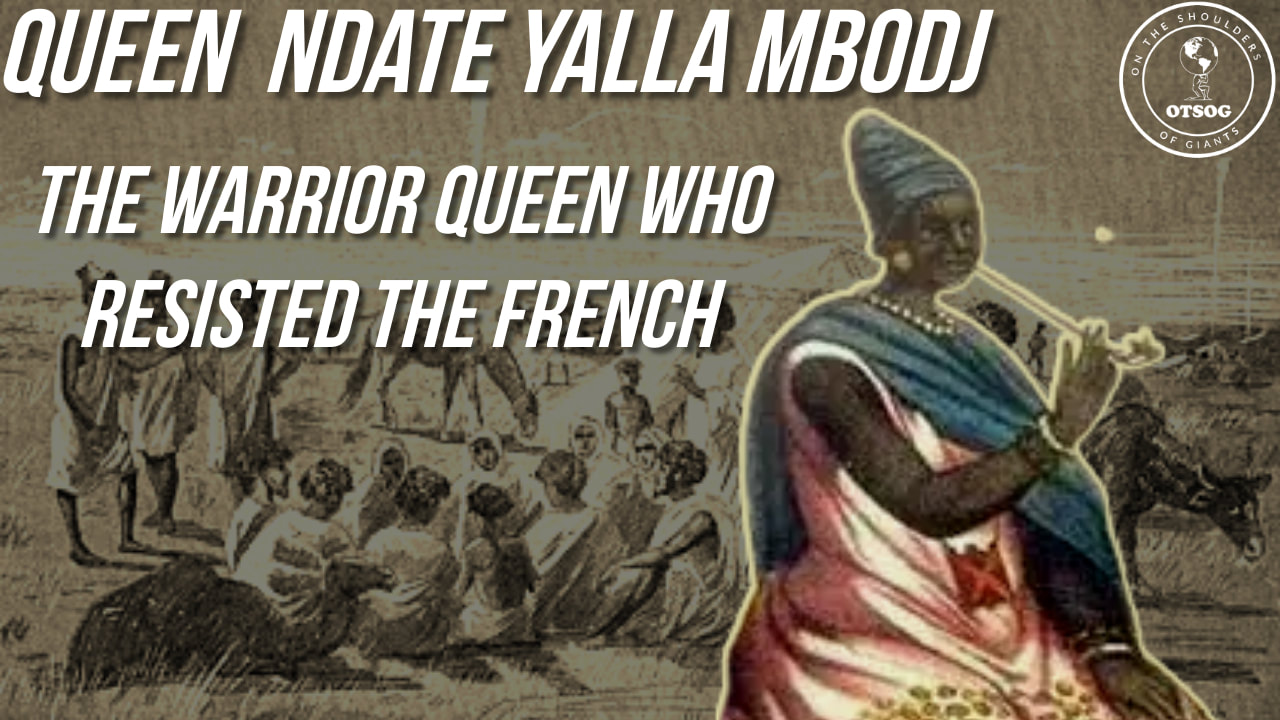
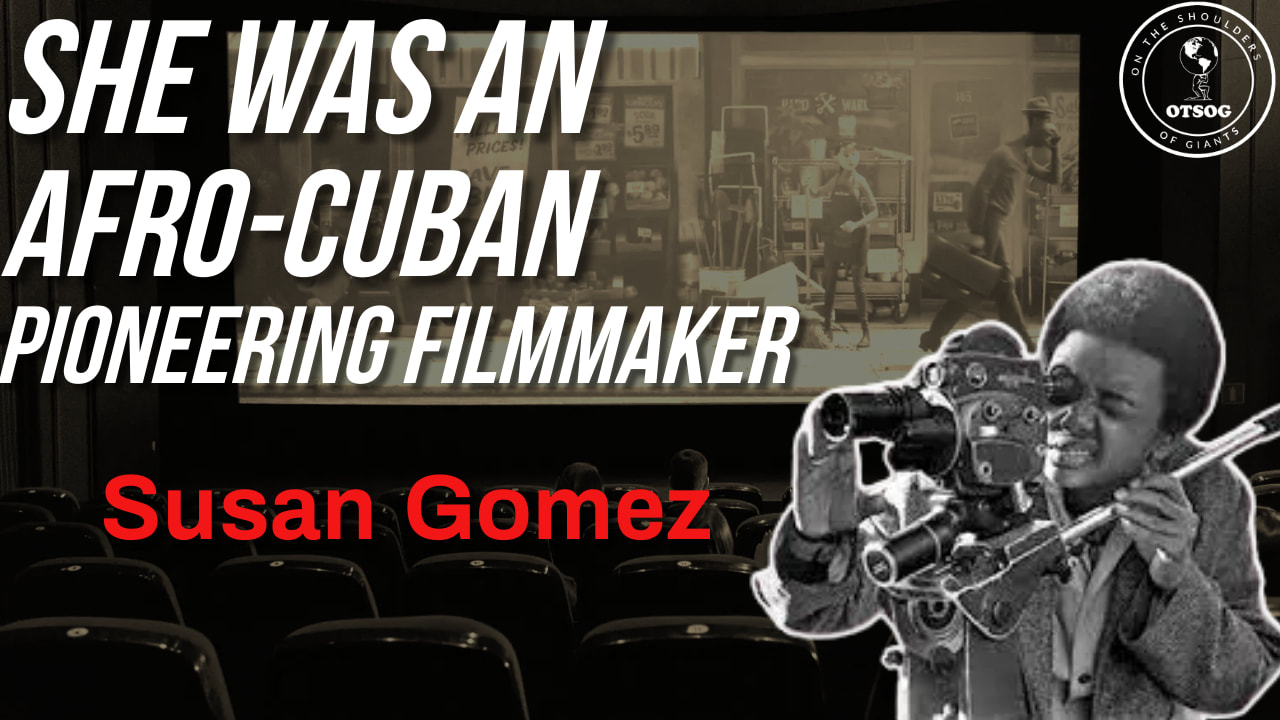


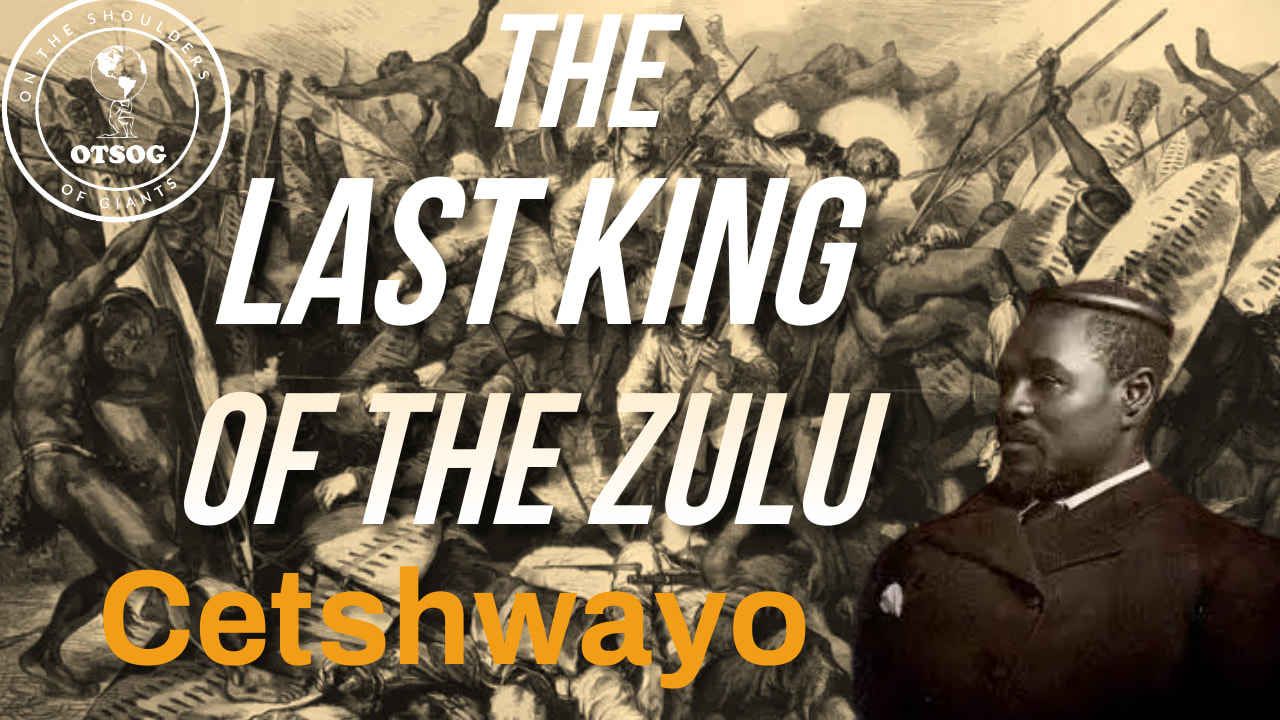
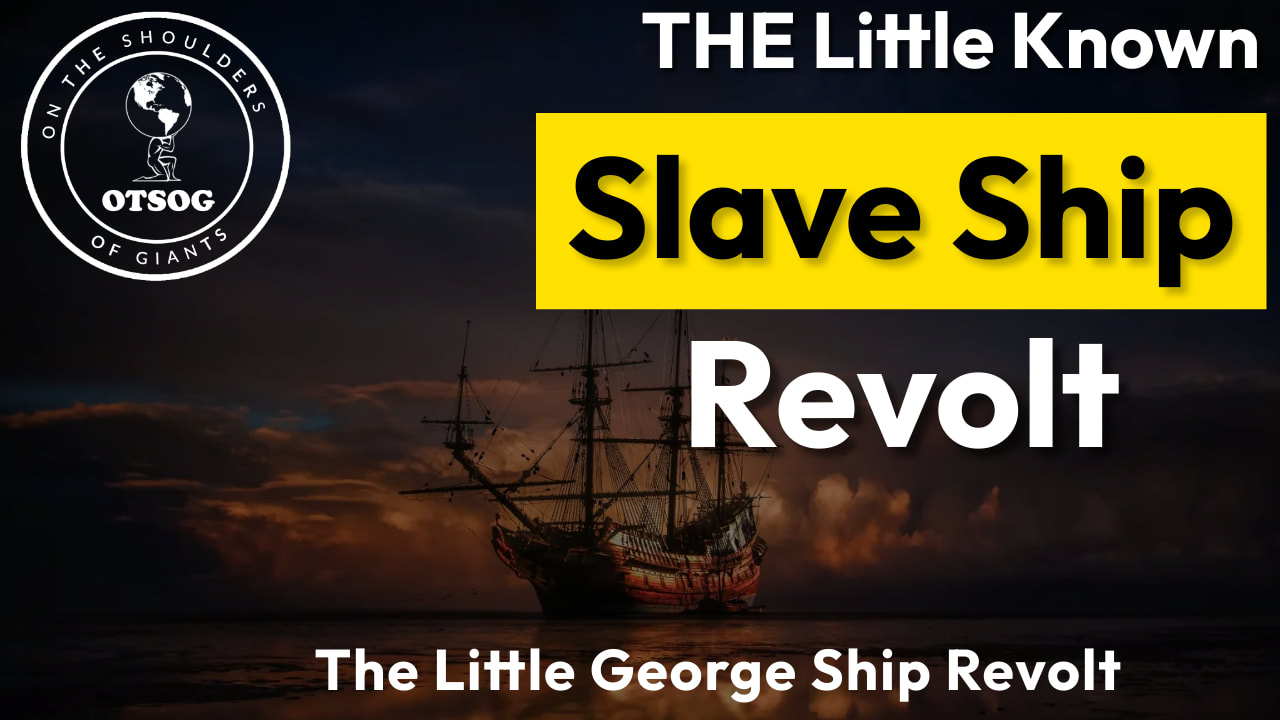
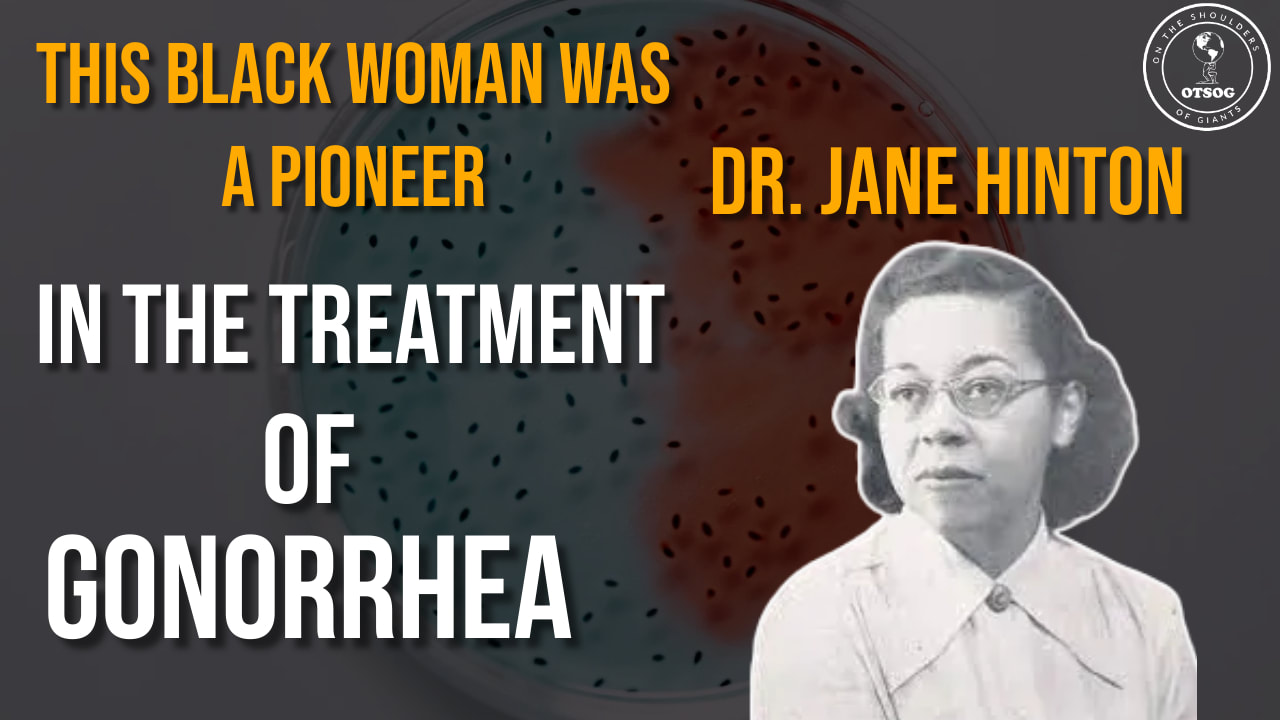
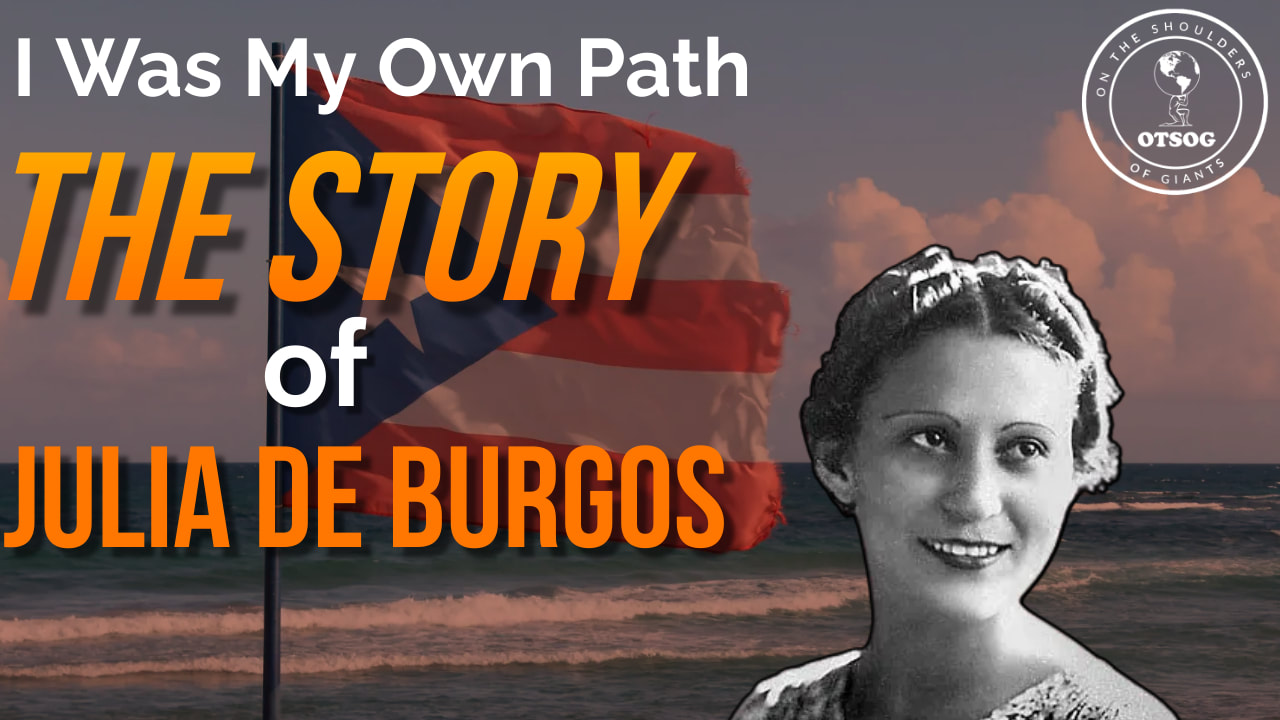

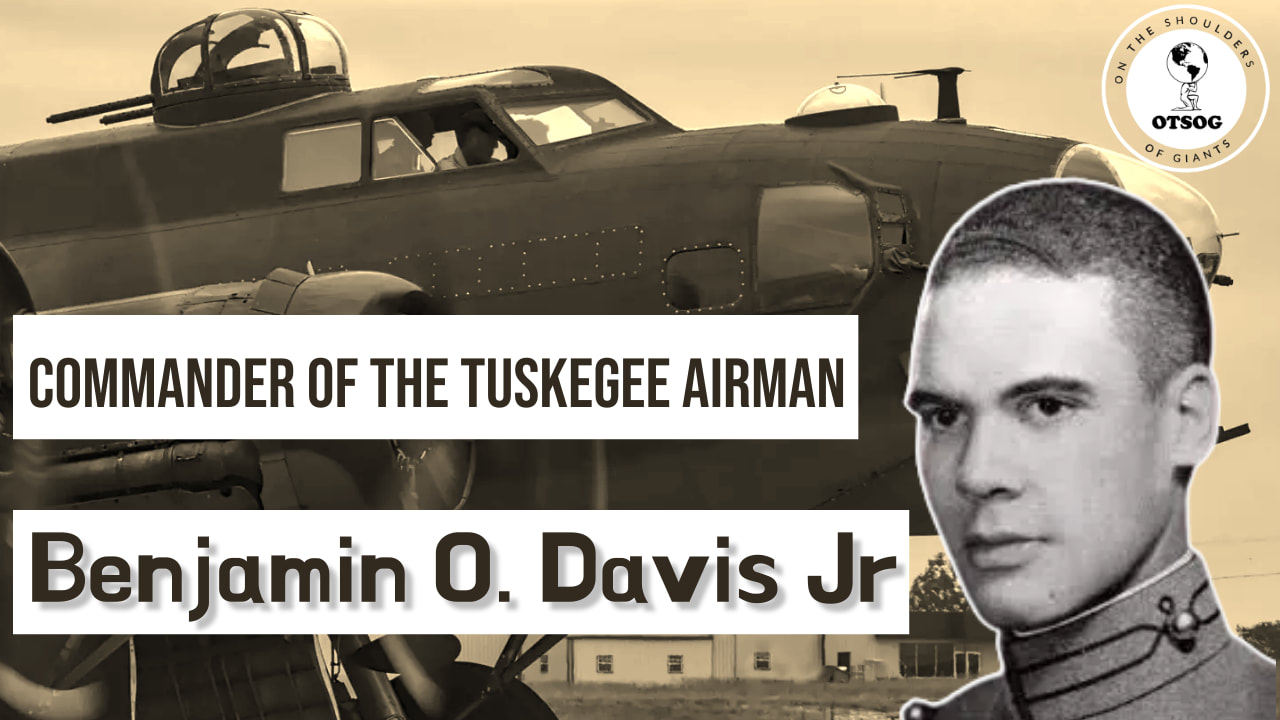
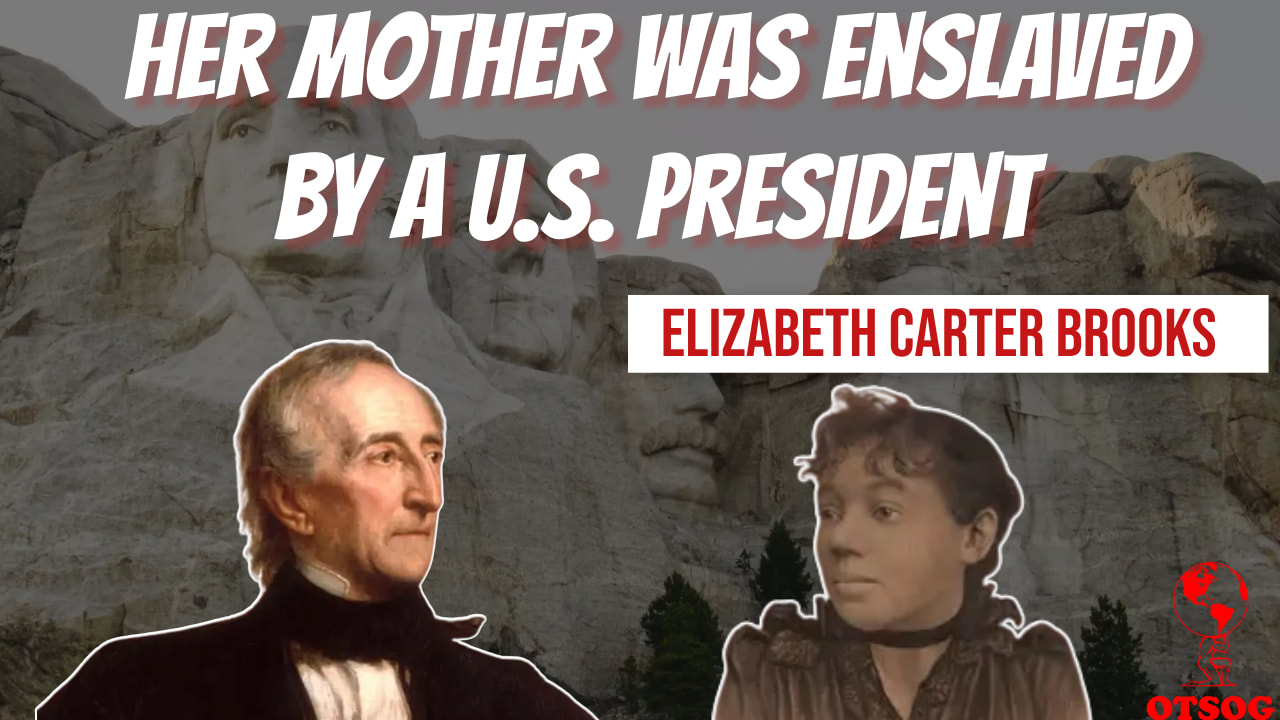
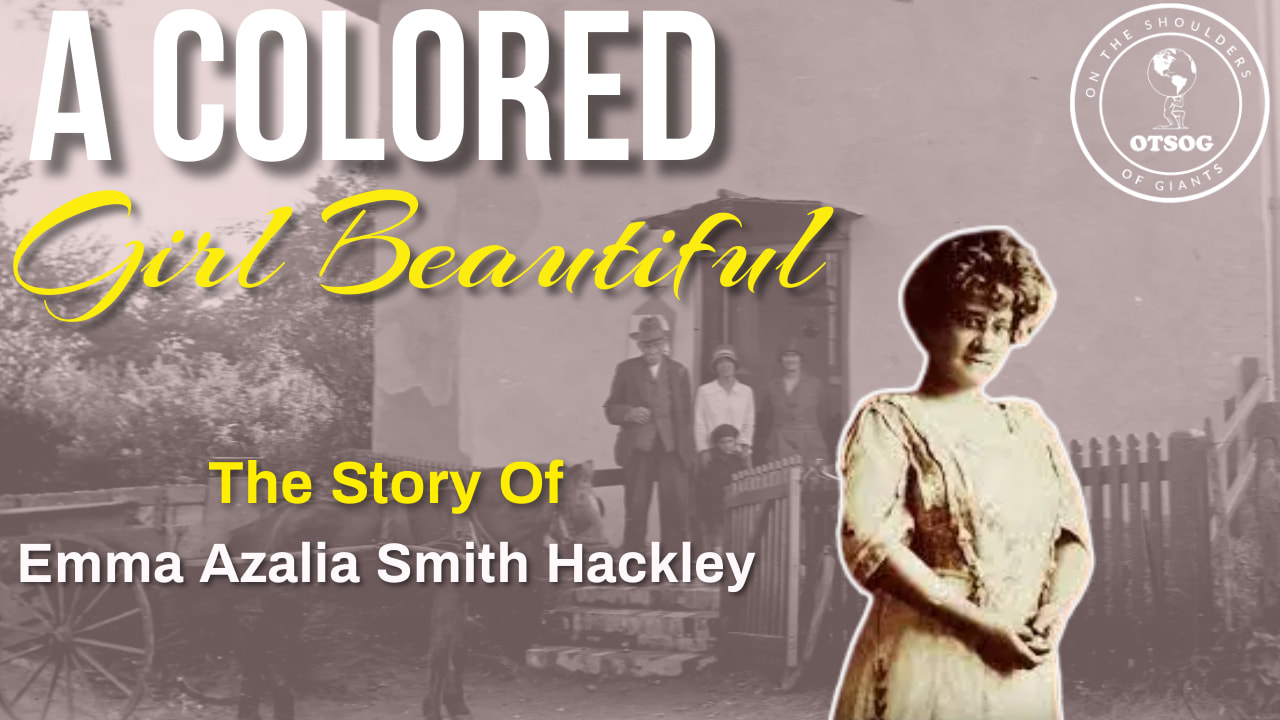

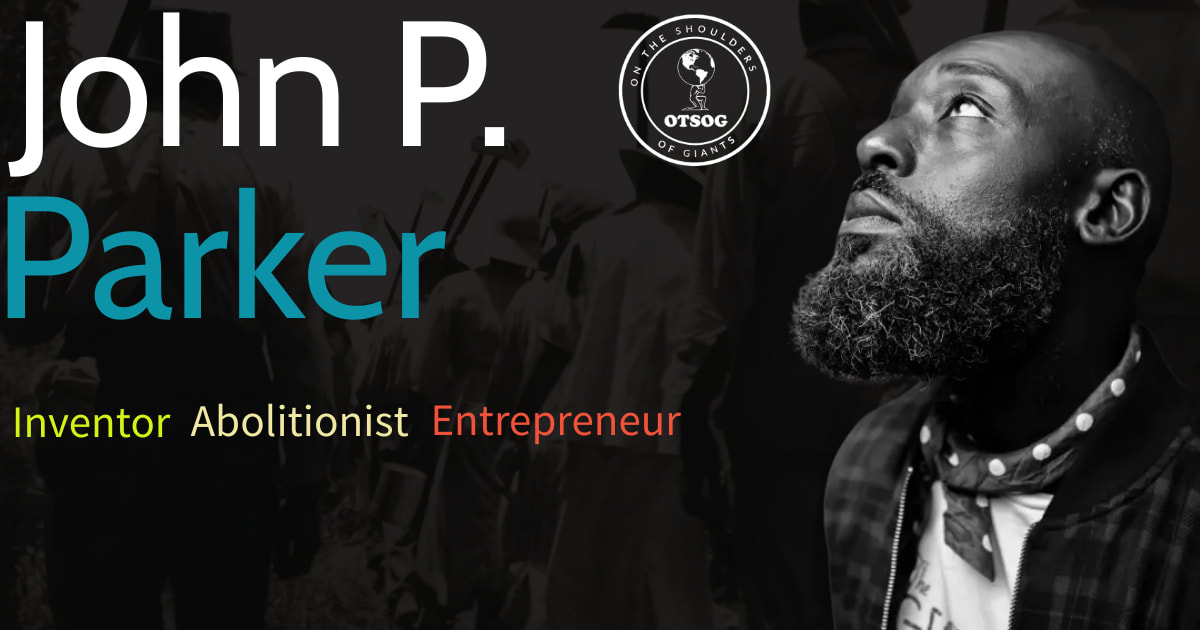
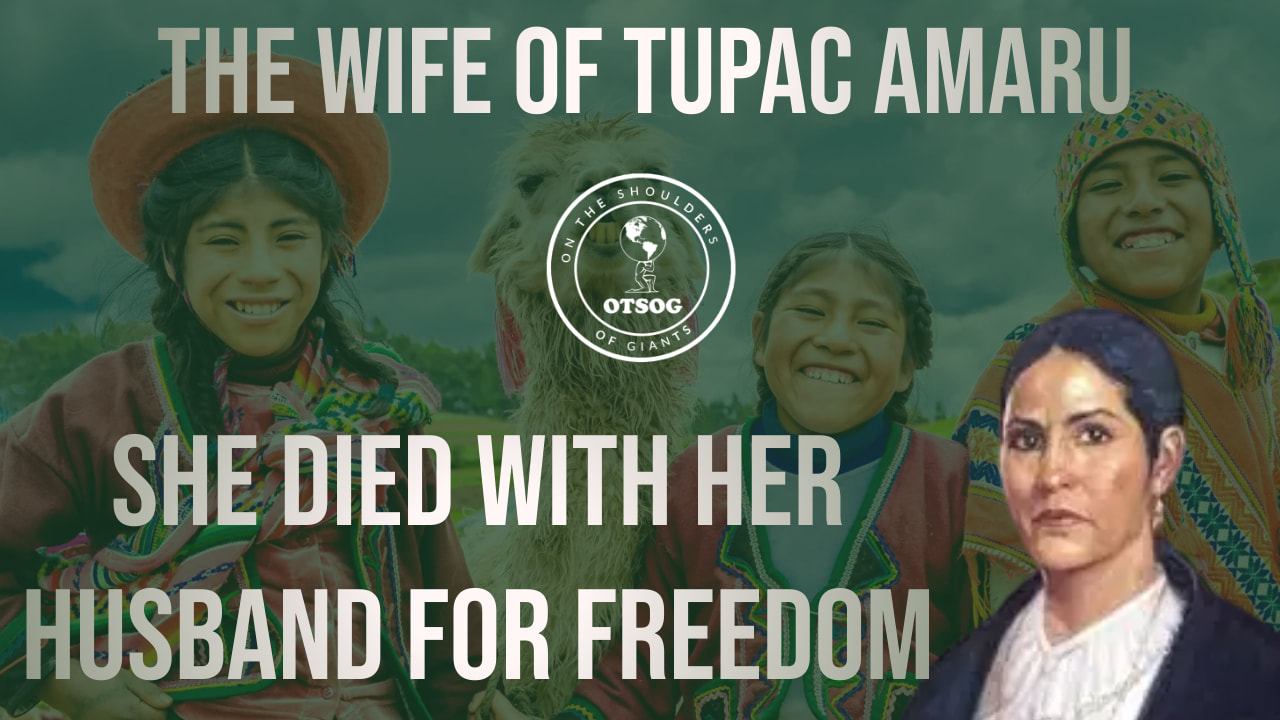

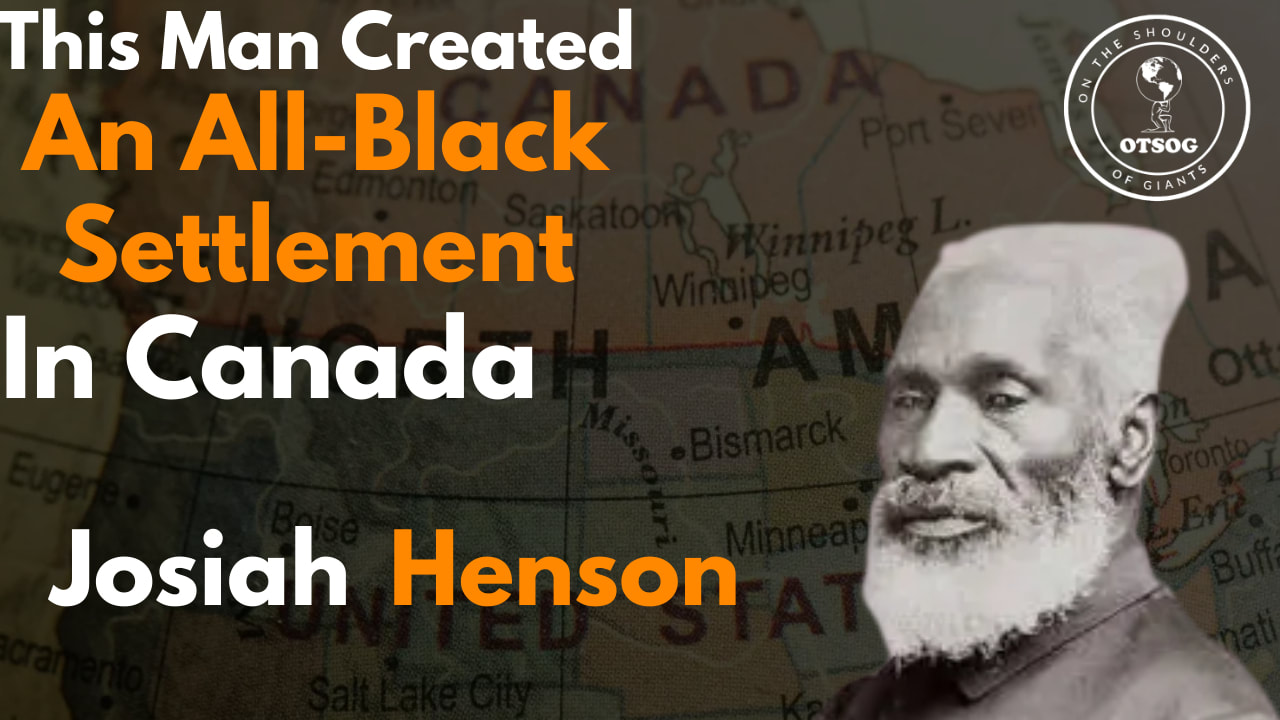
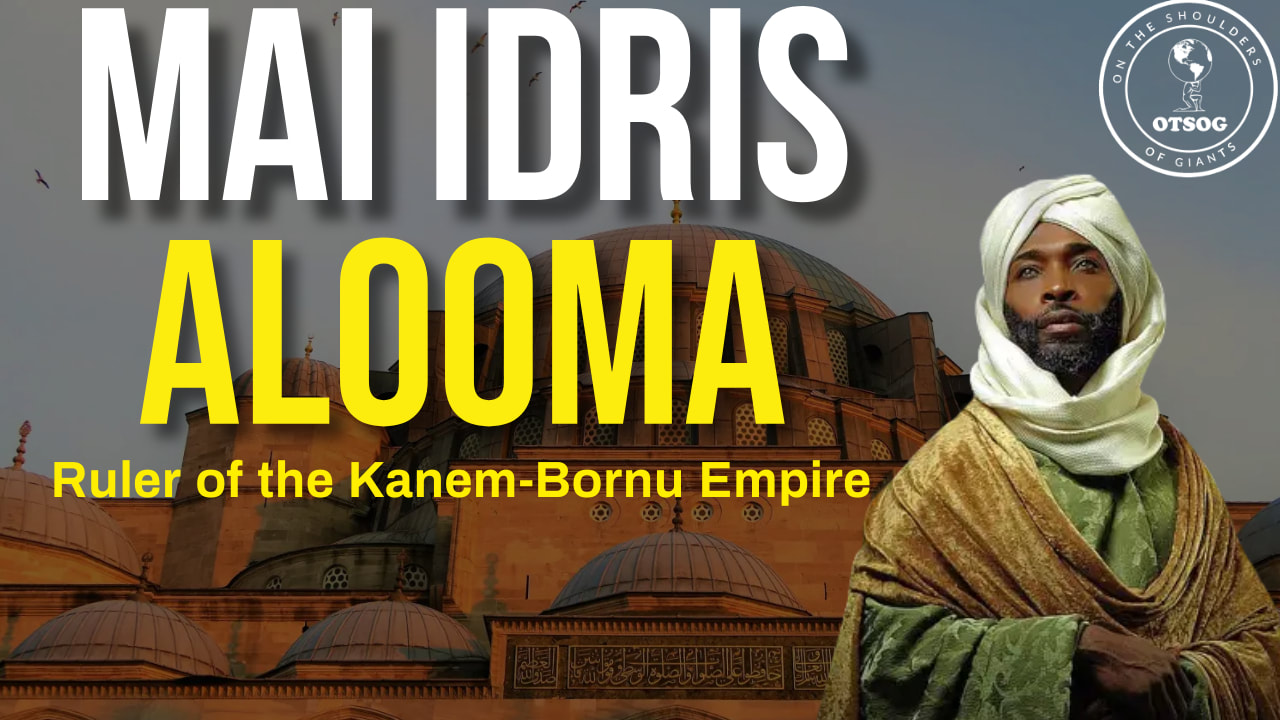
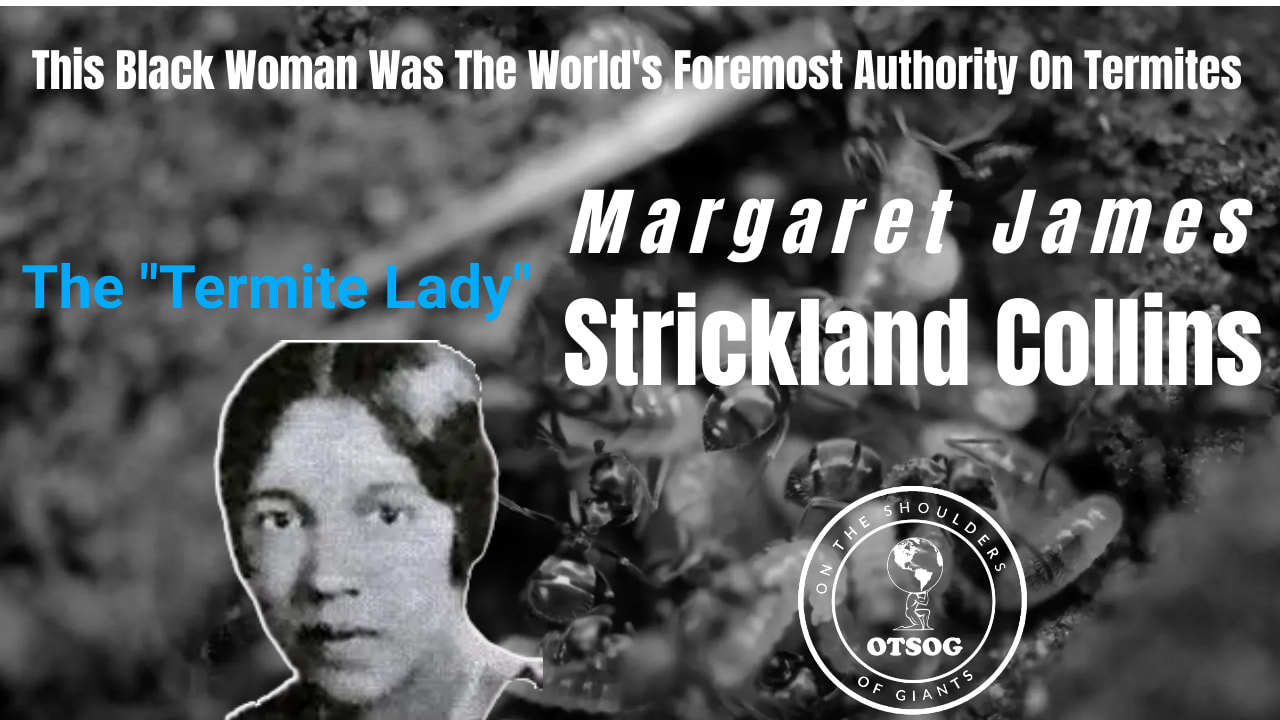


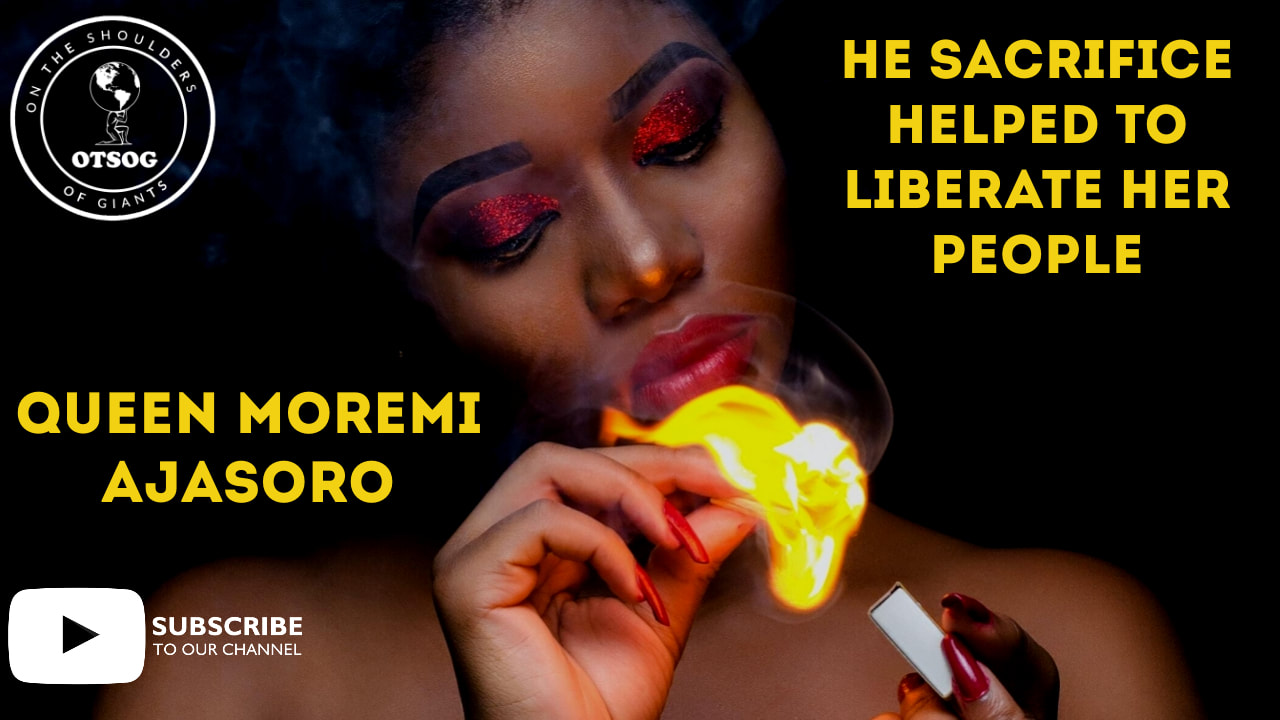
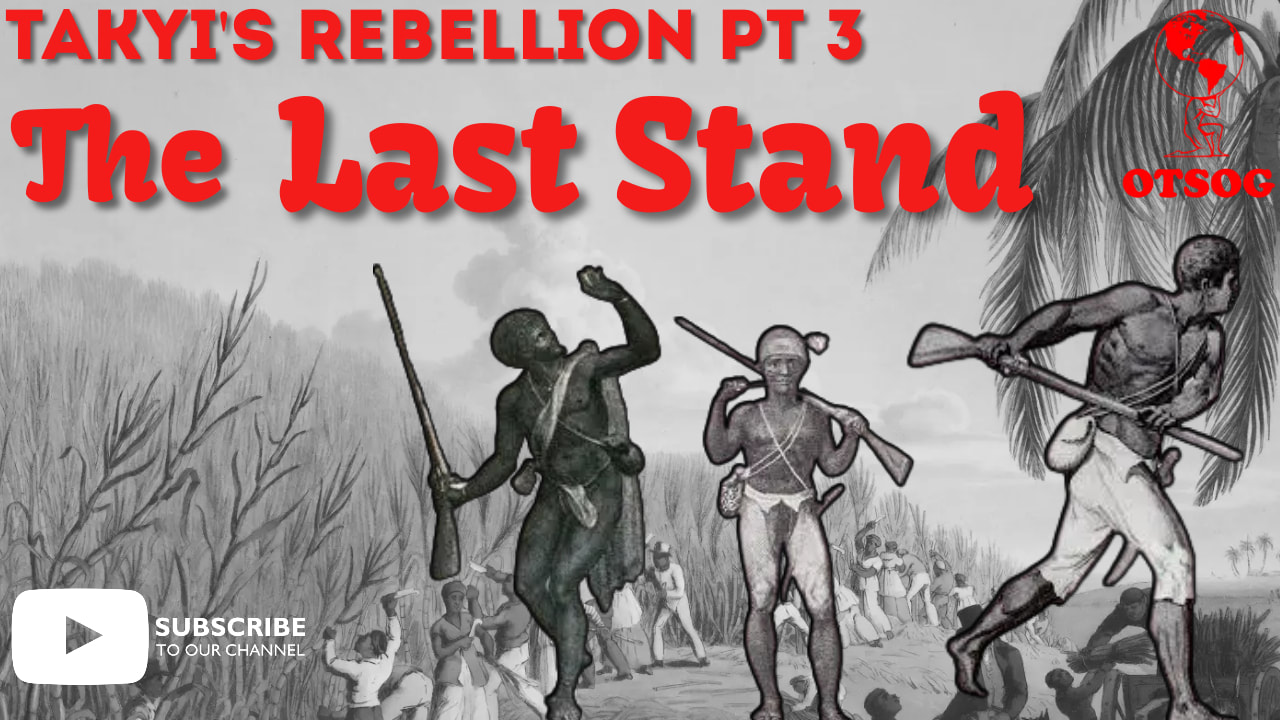
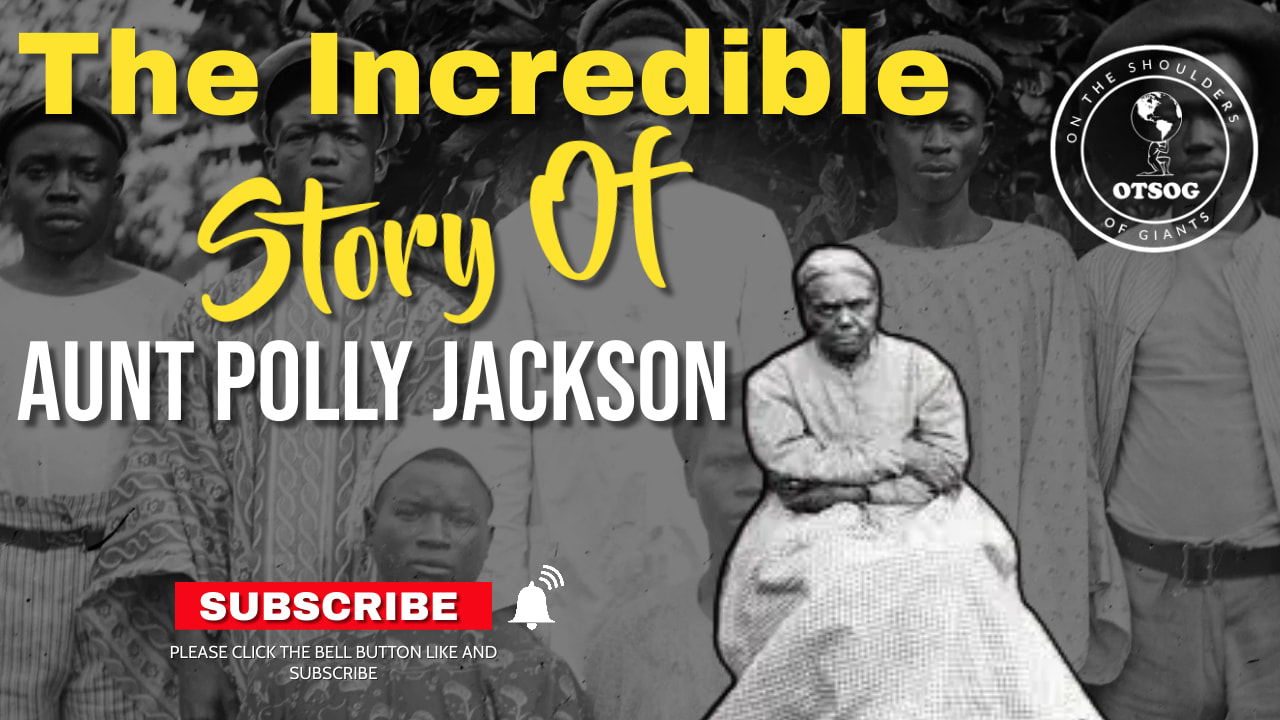
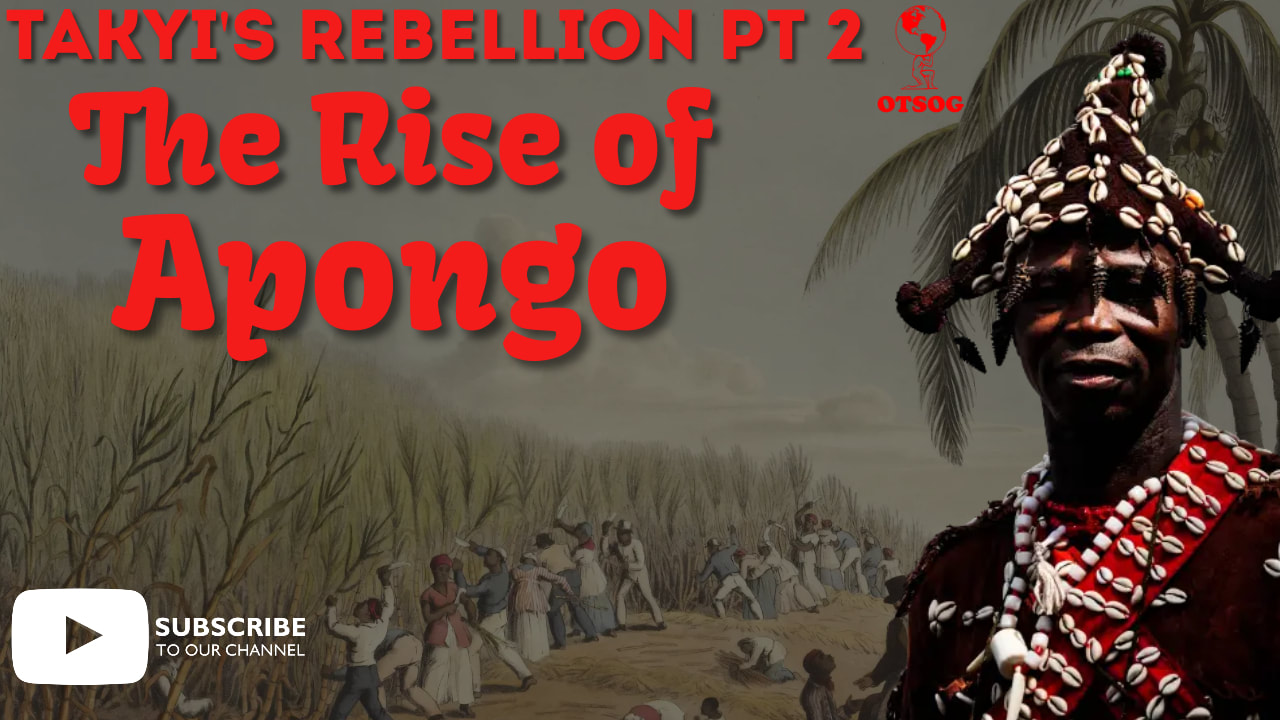
 RSS Feed
RSS Feed
